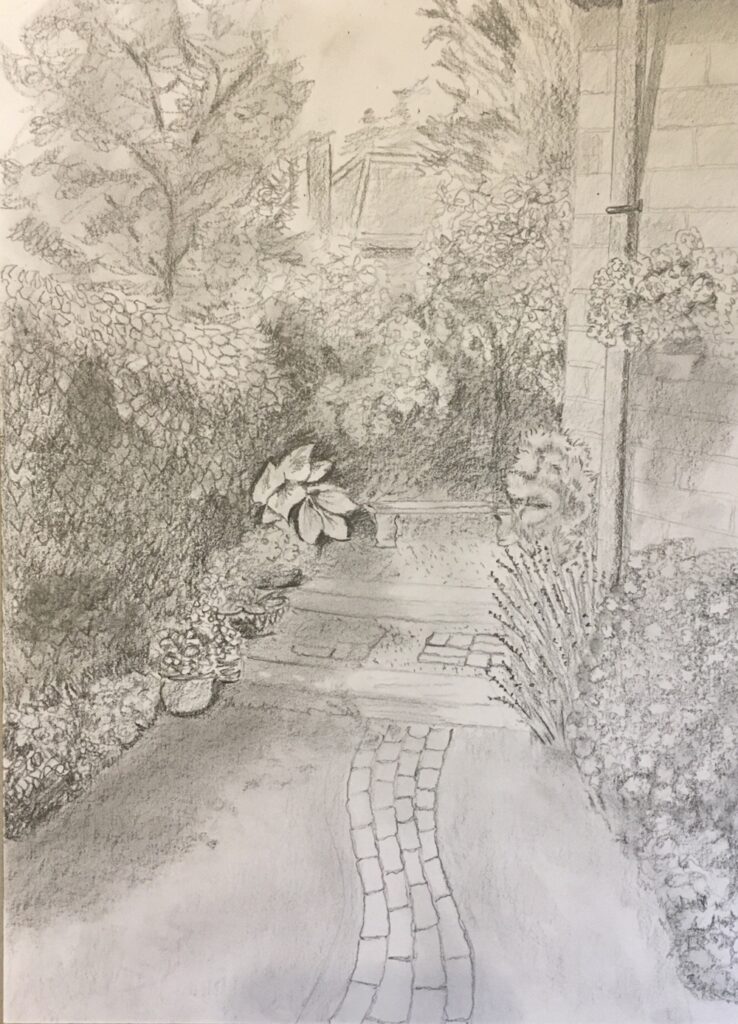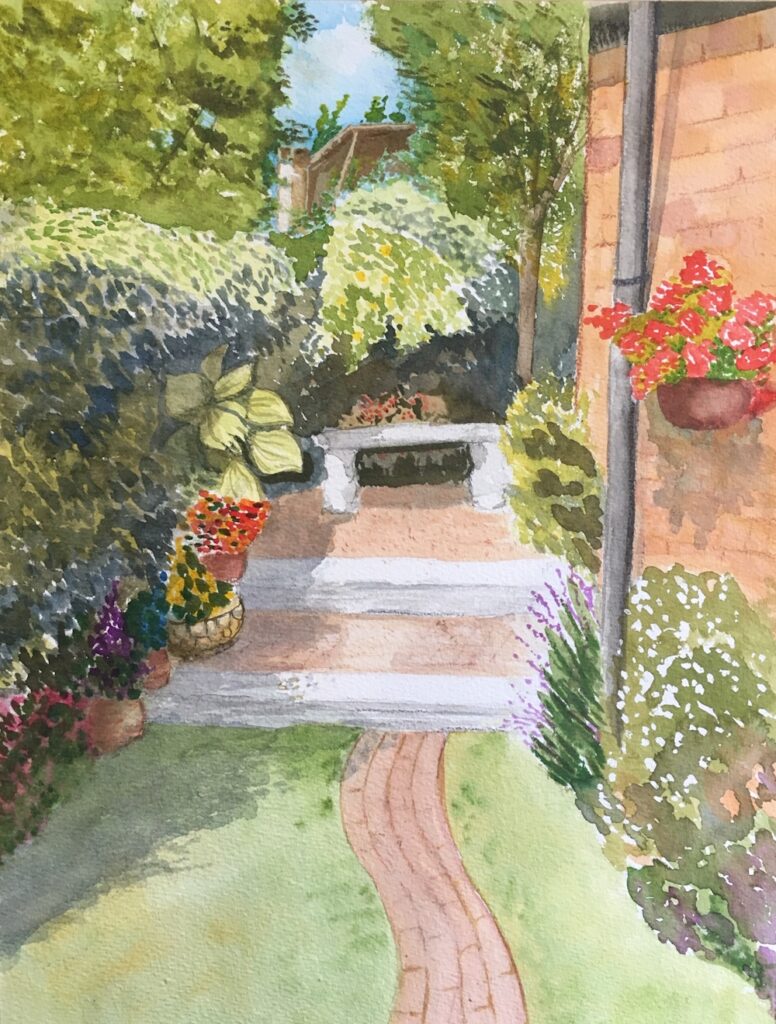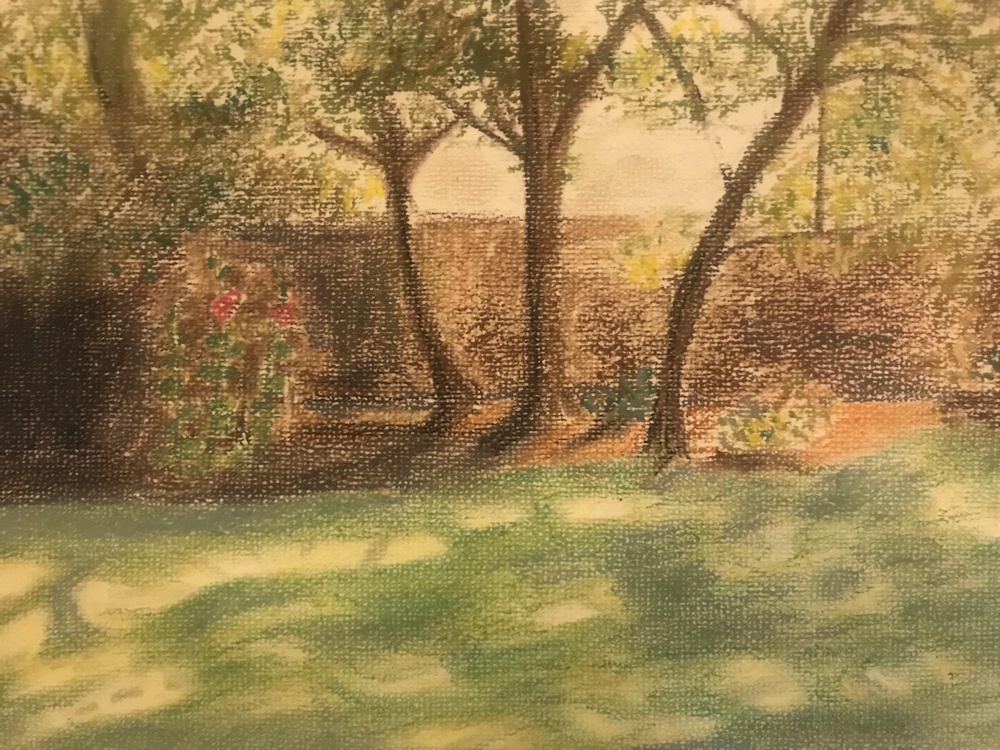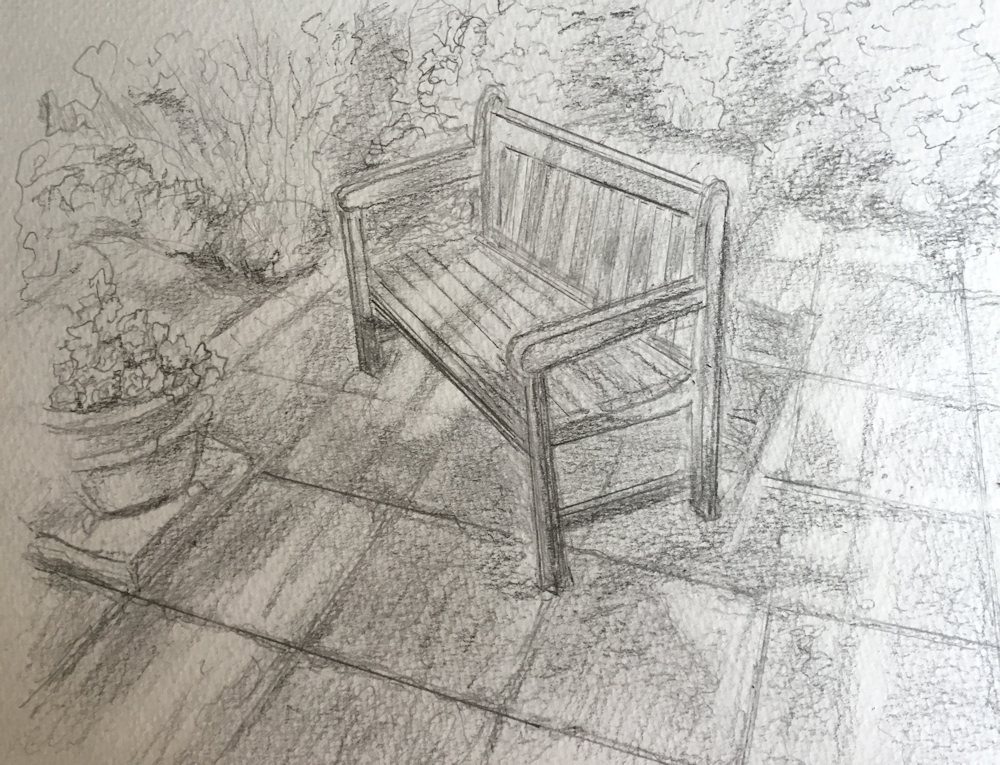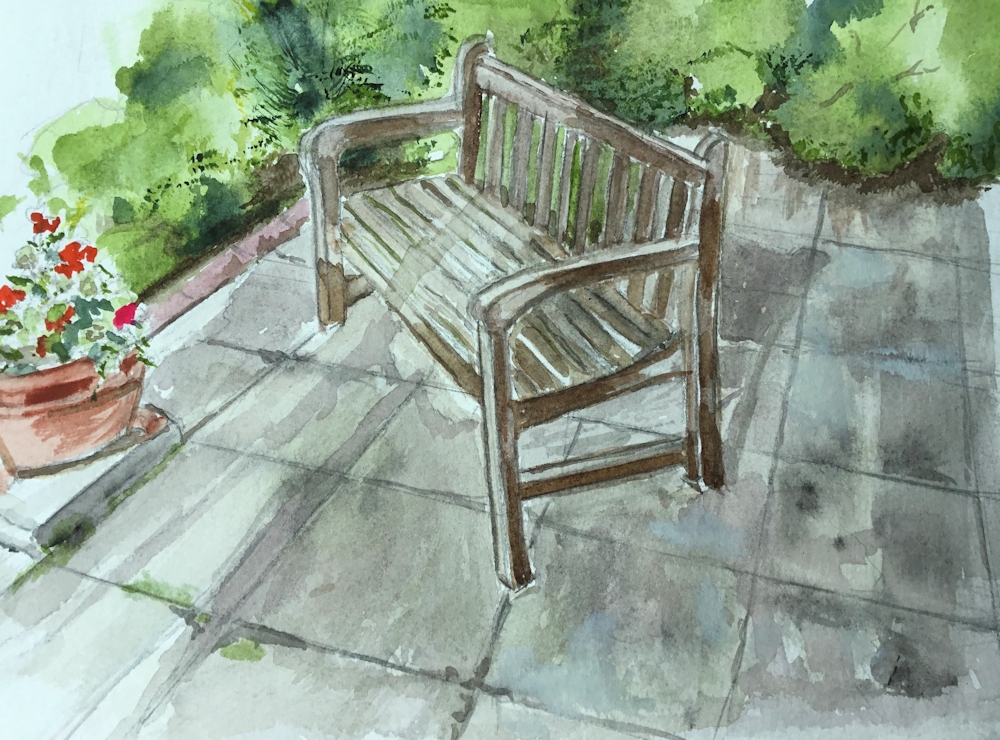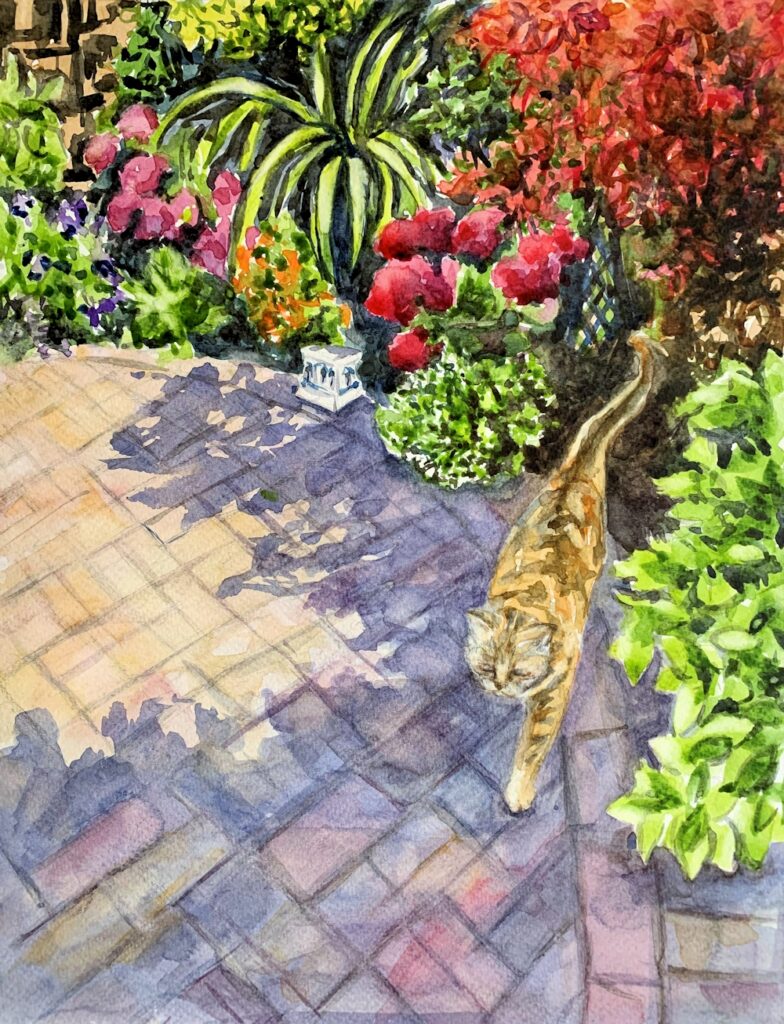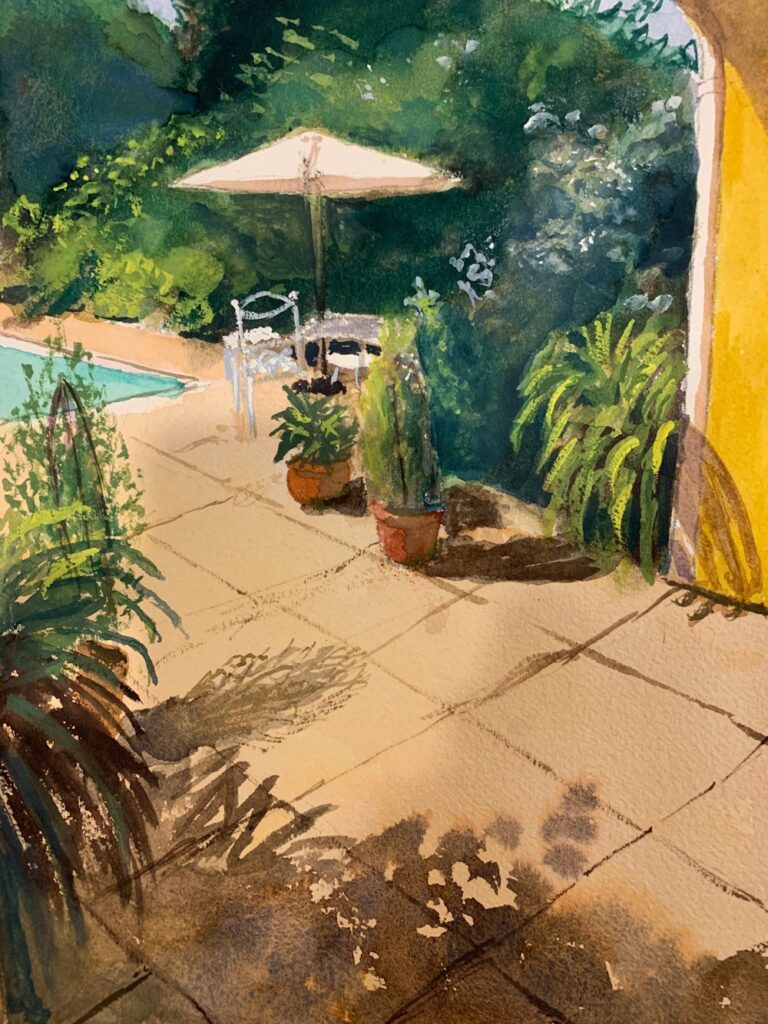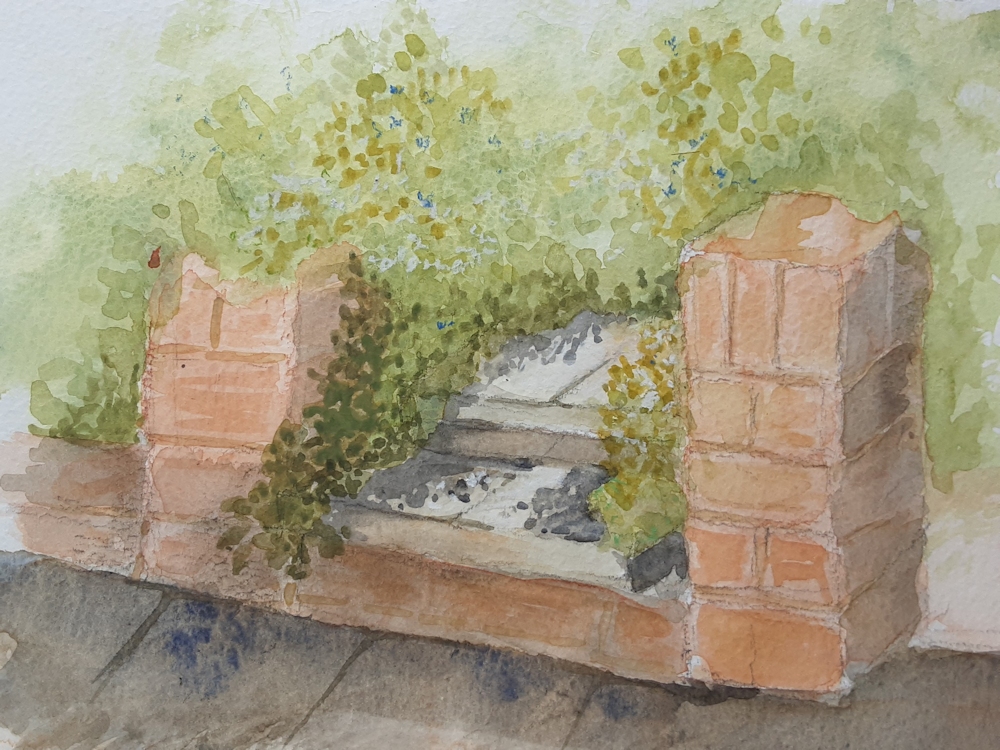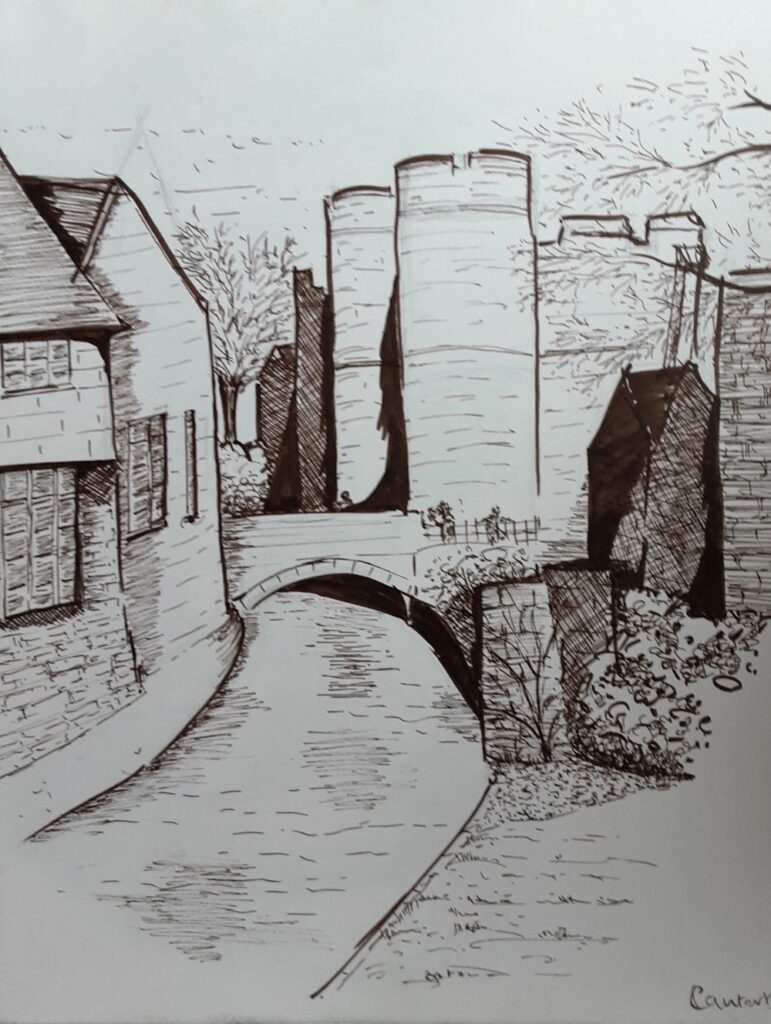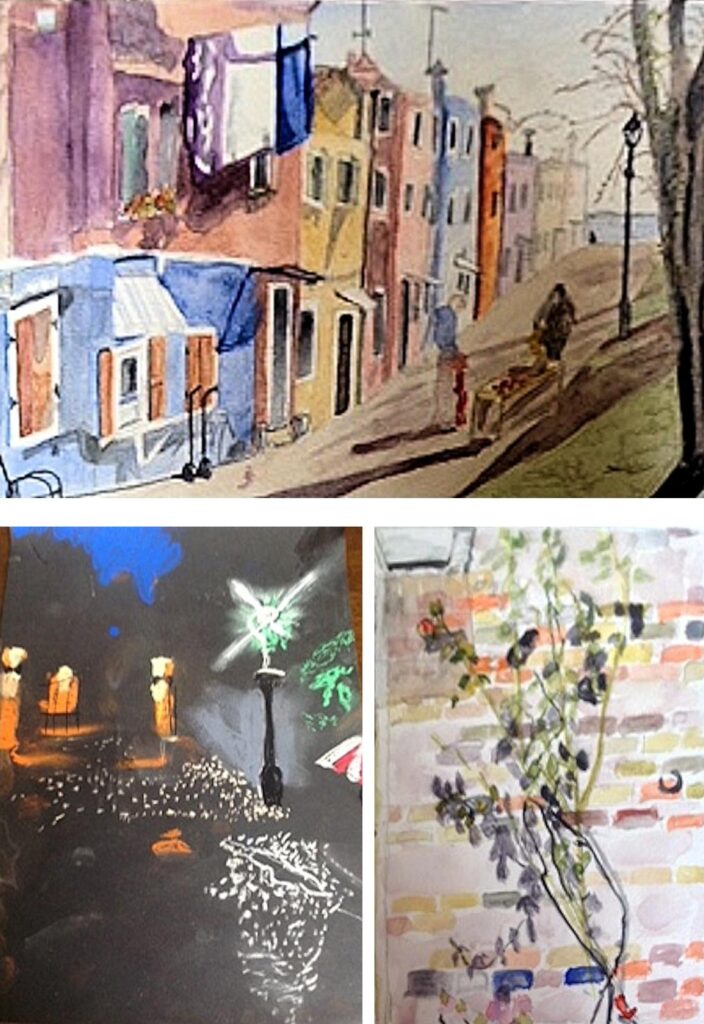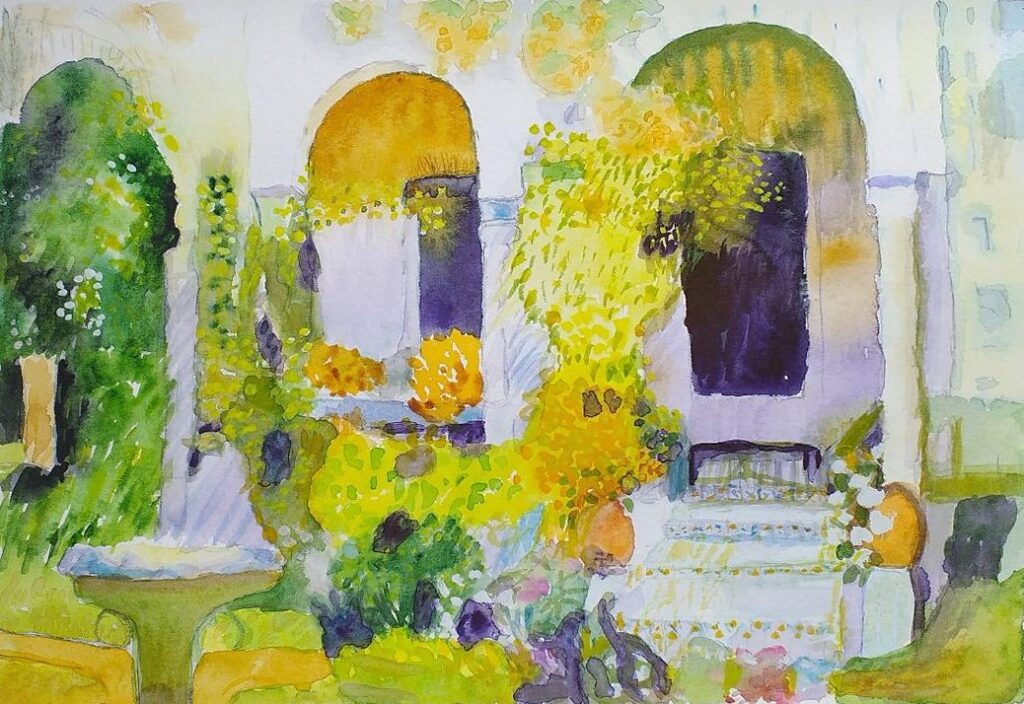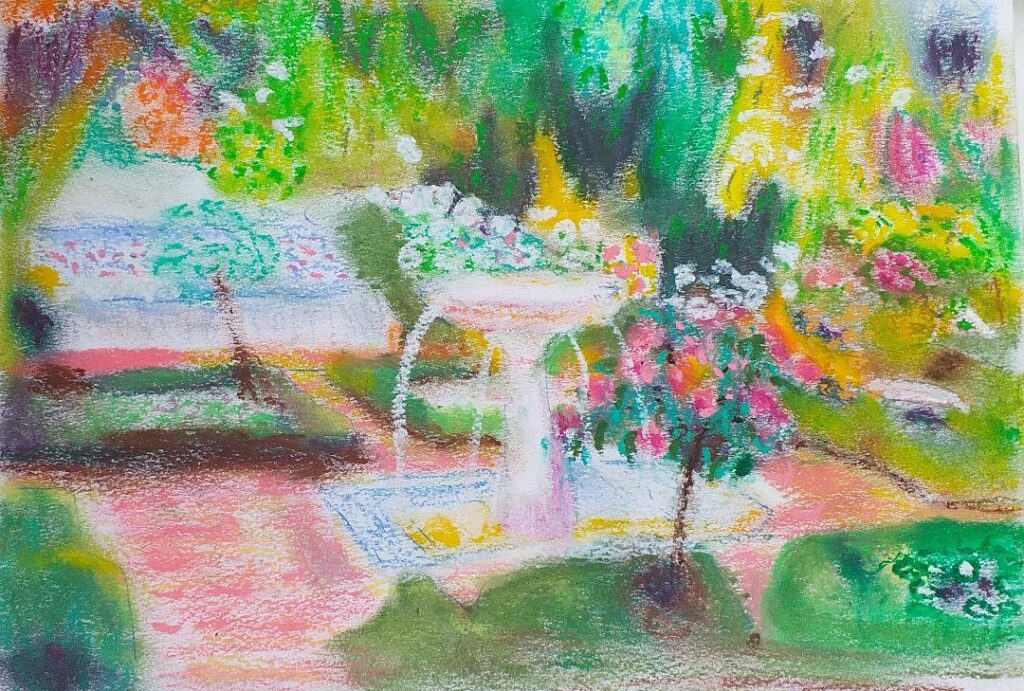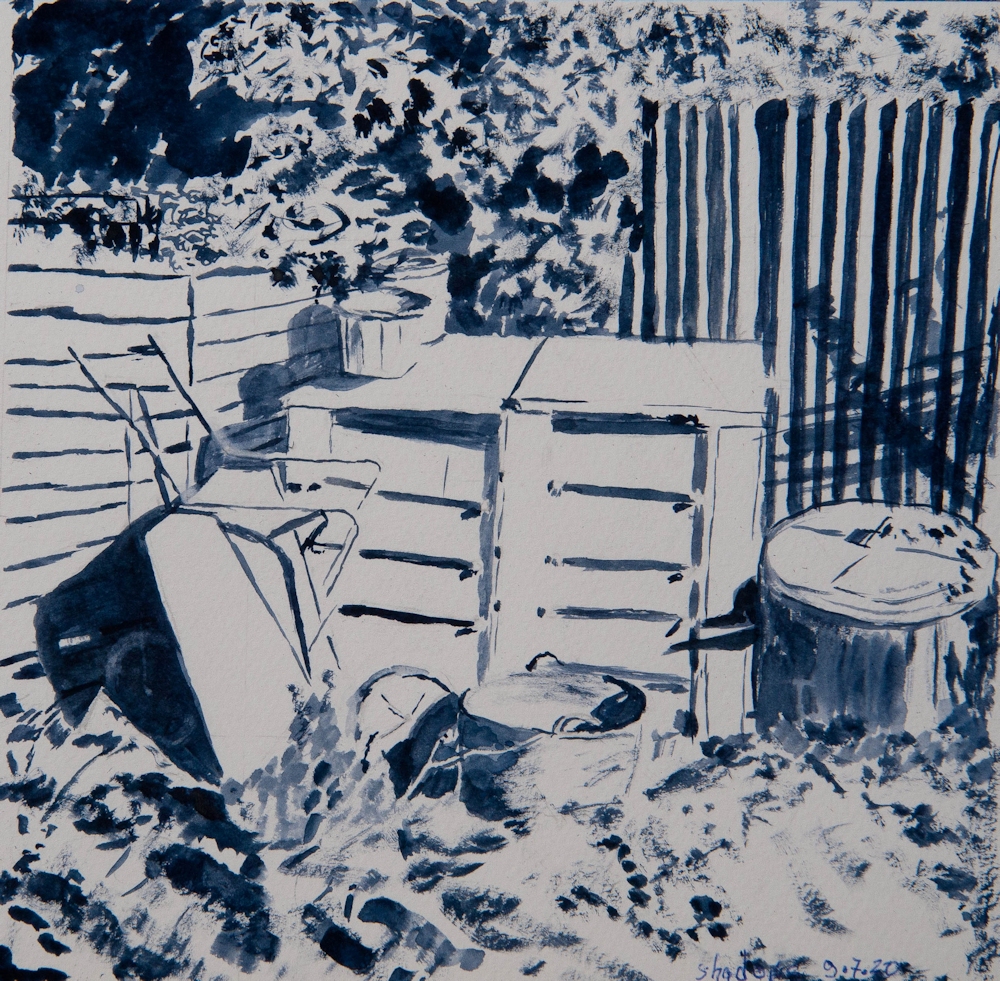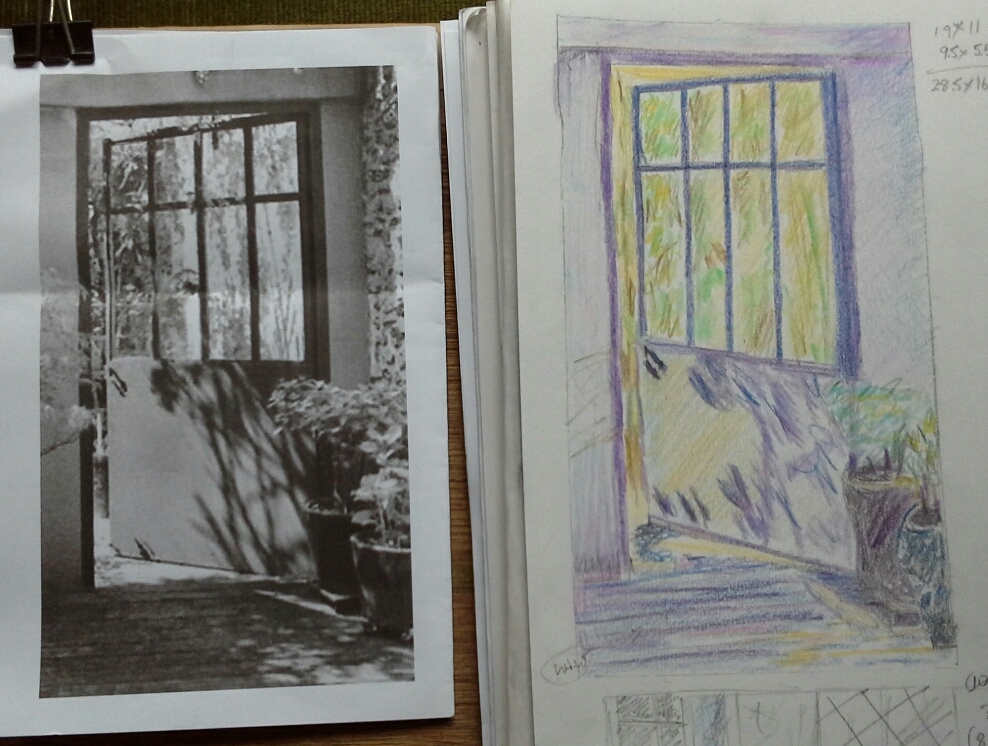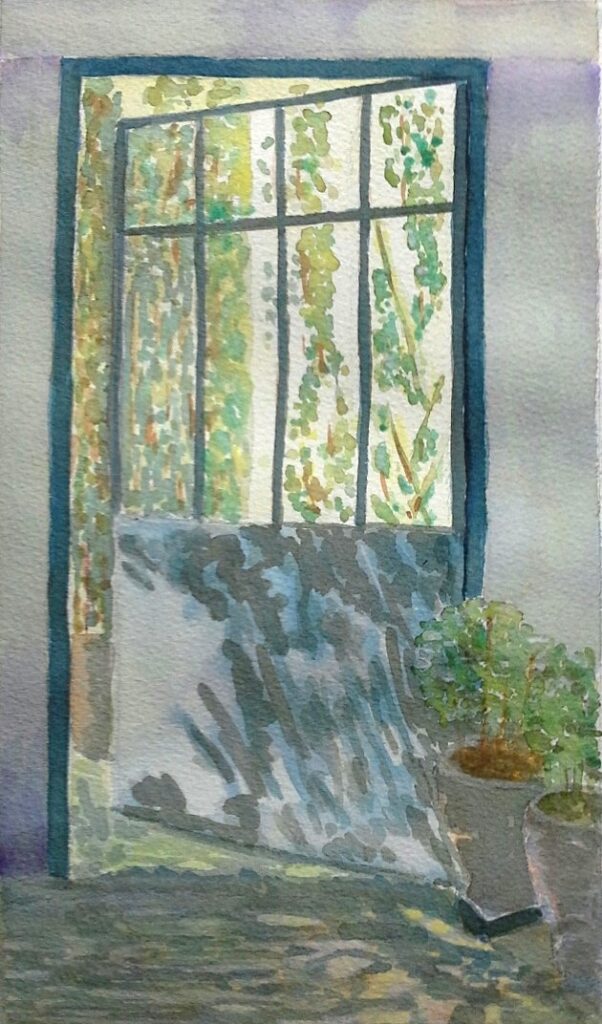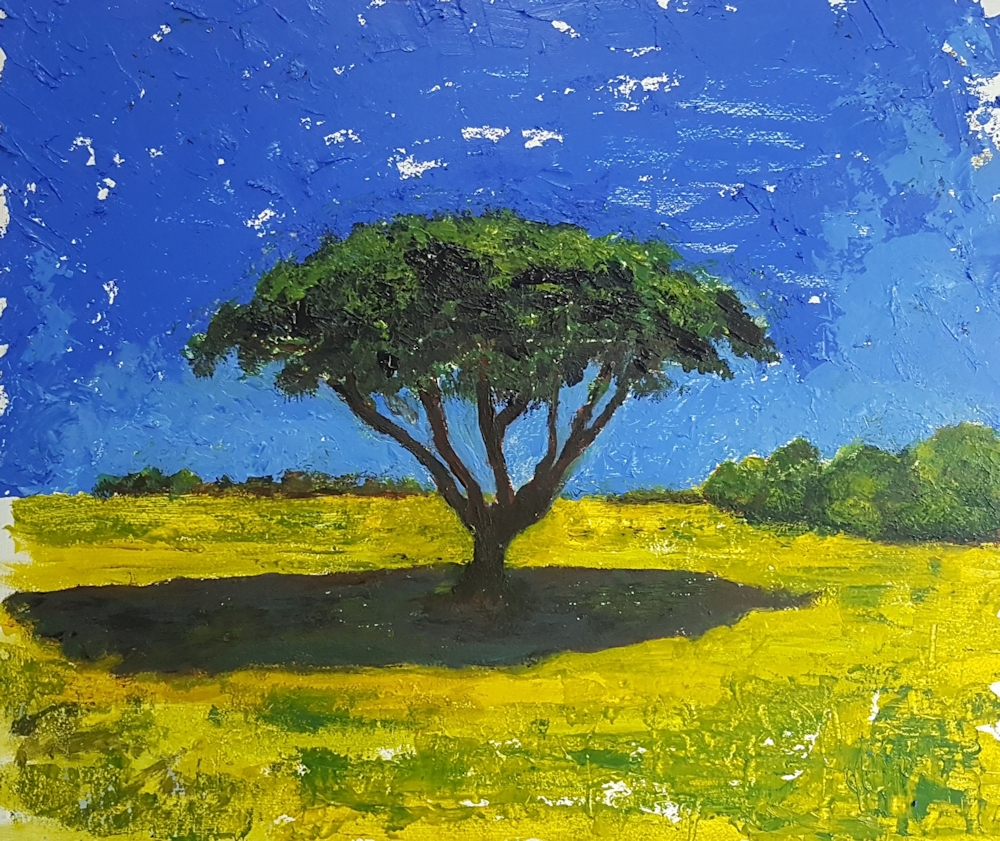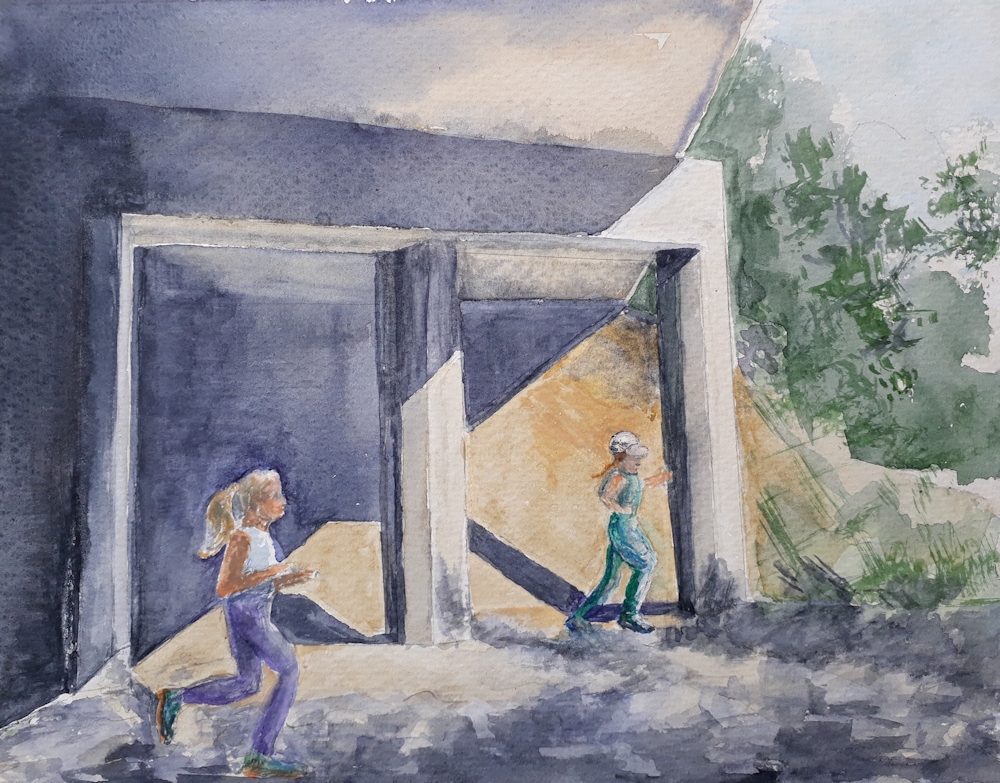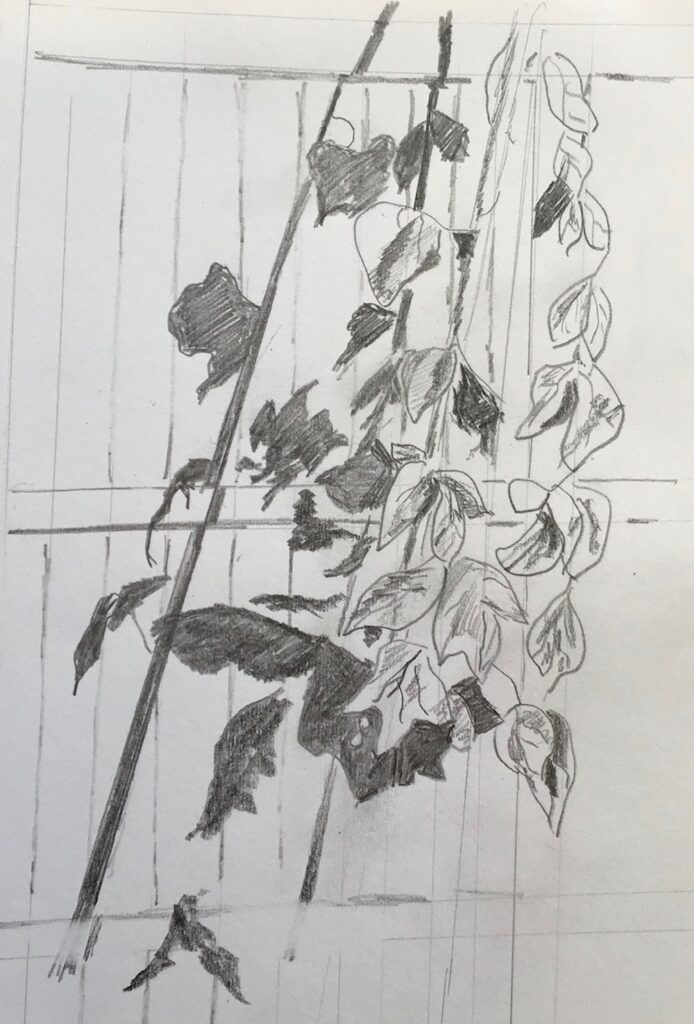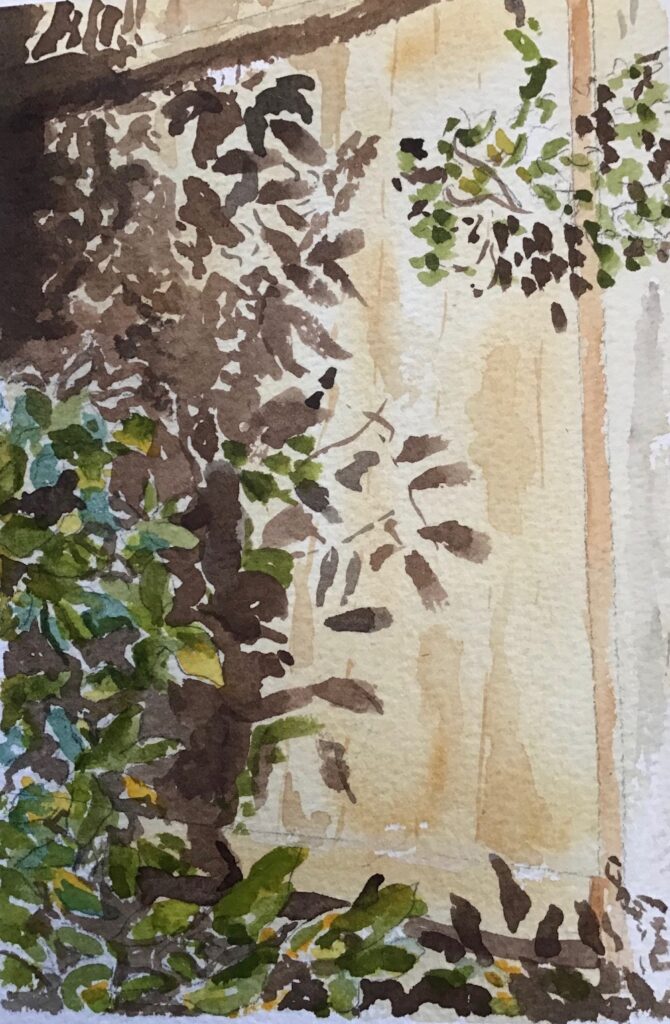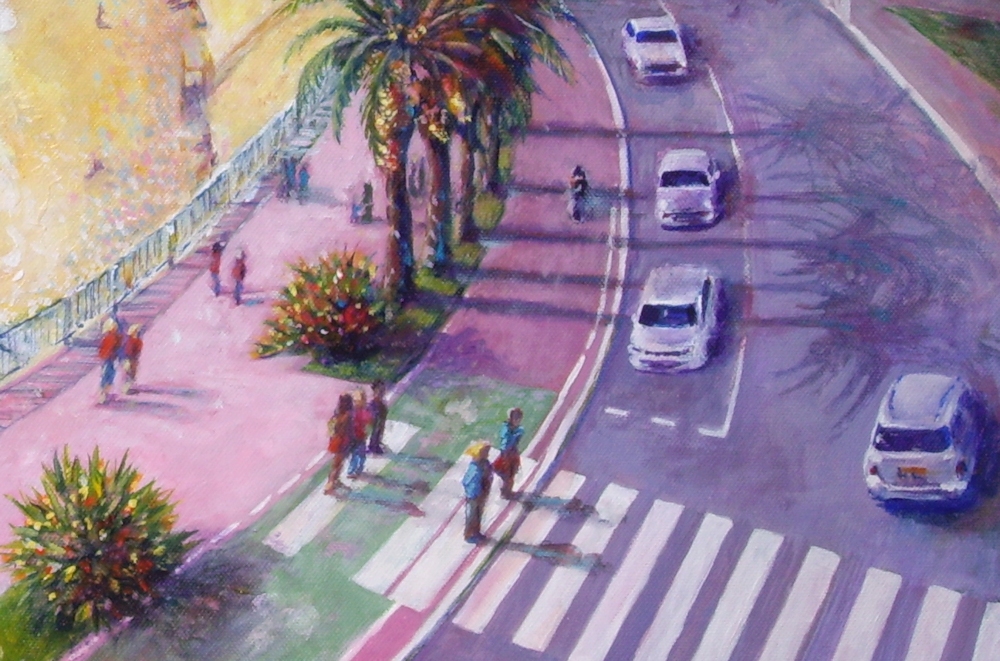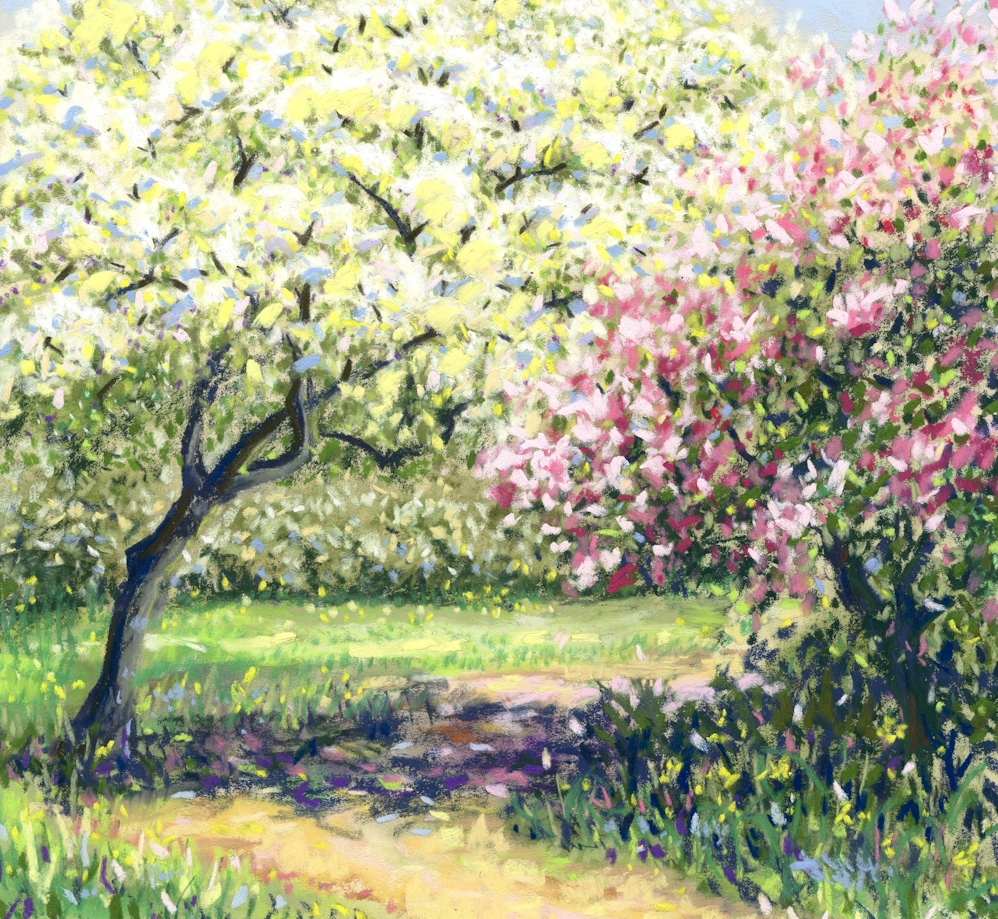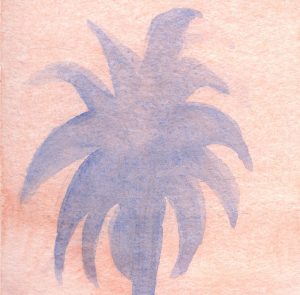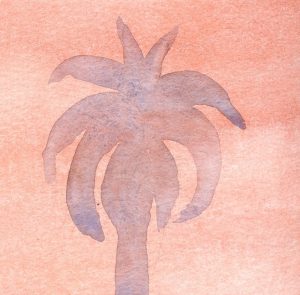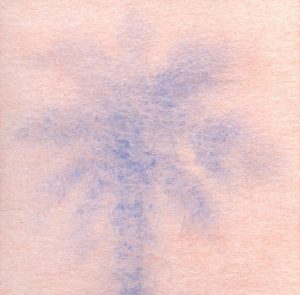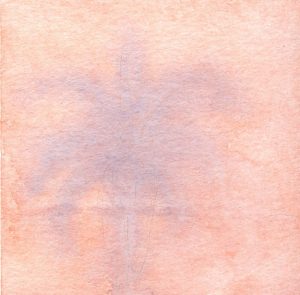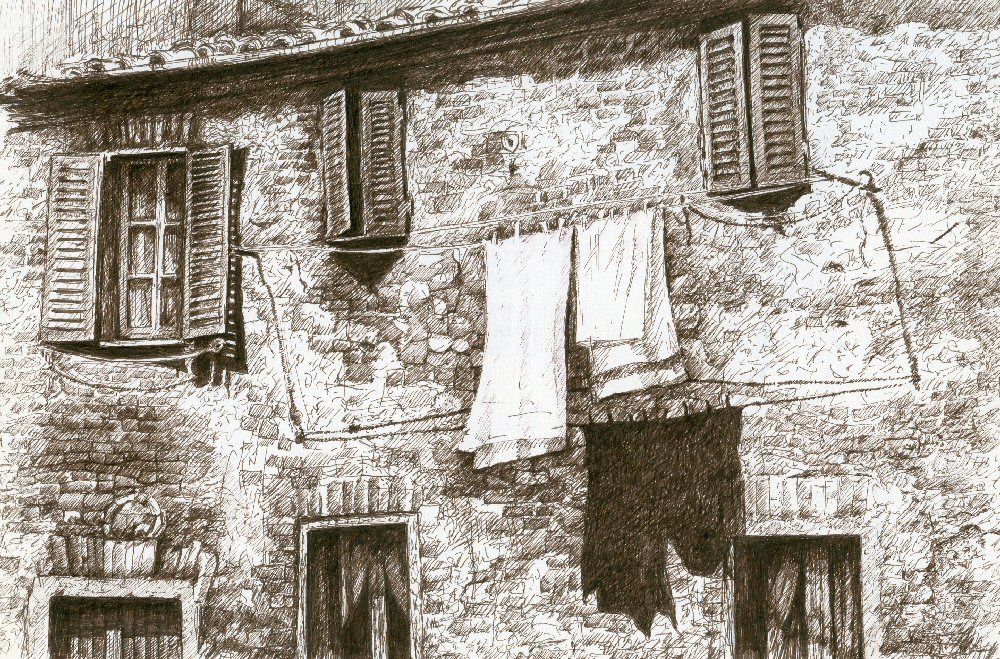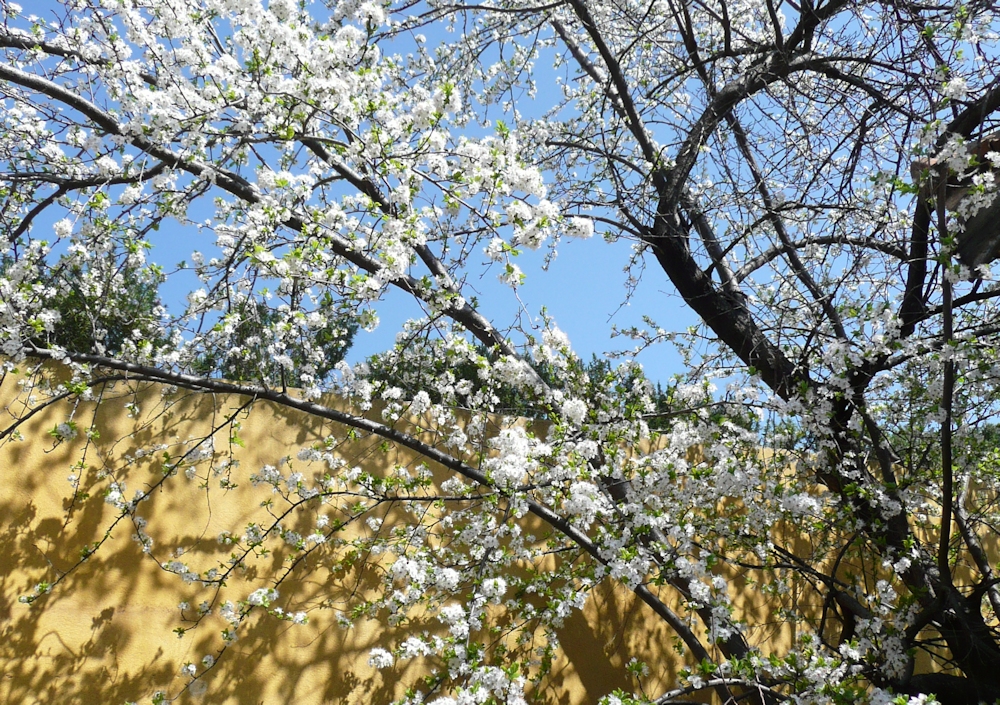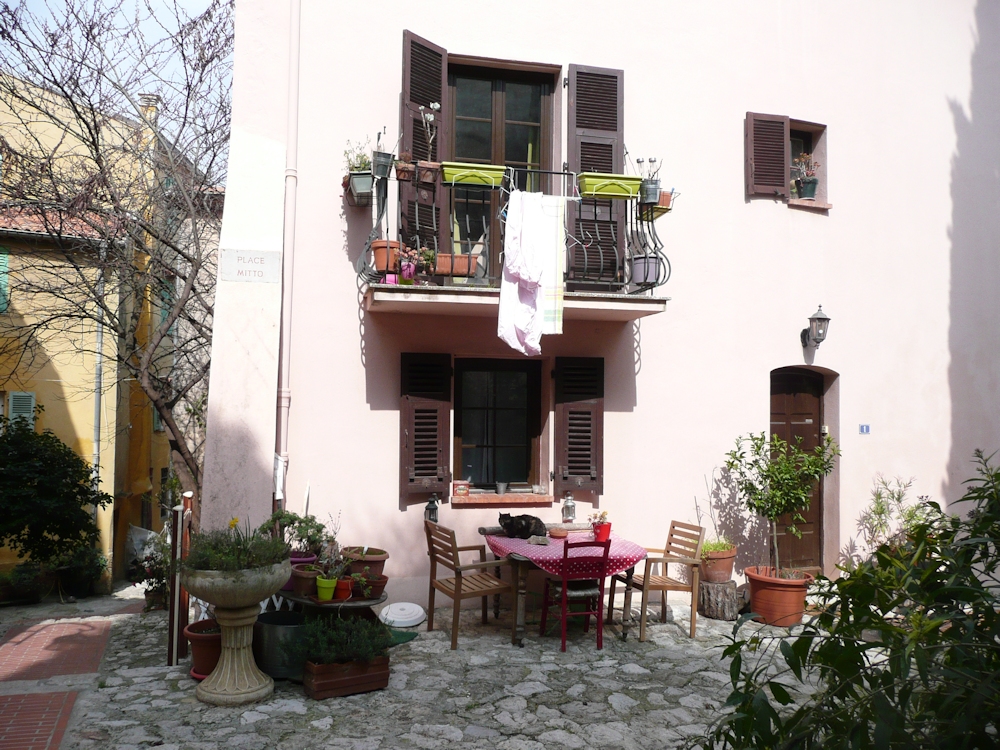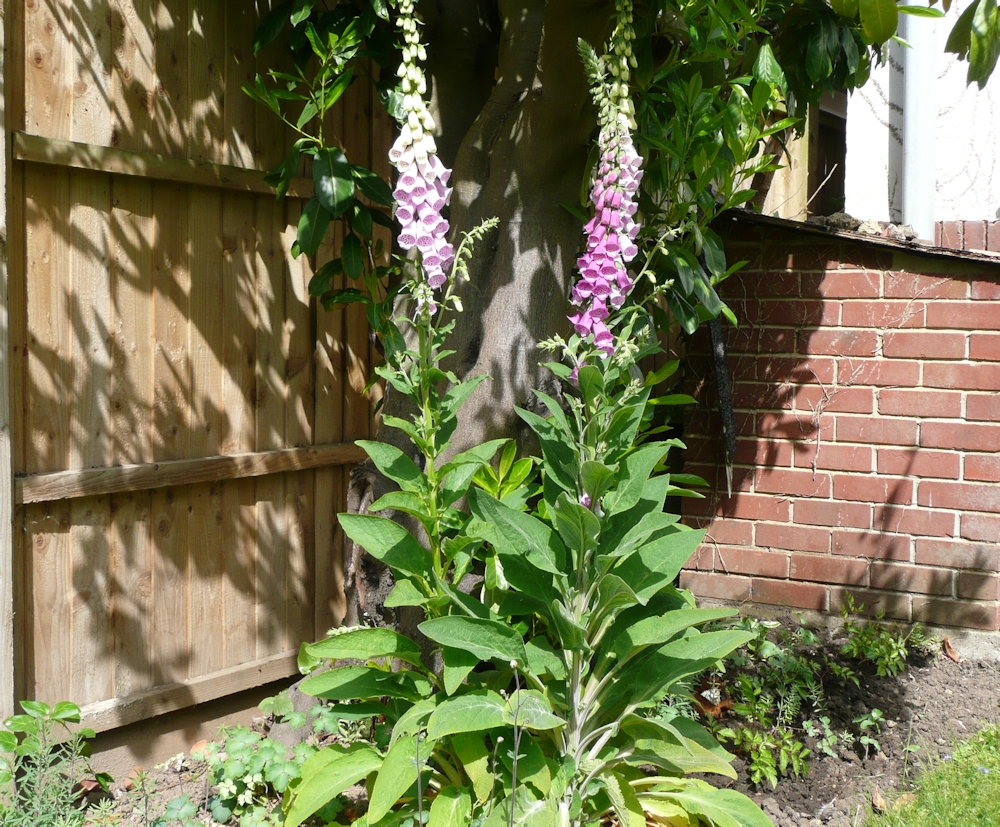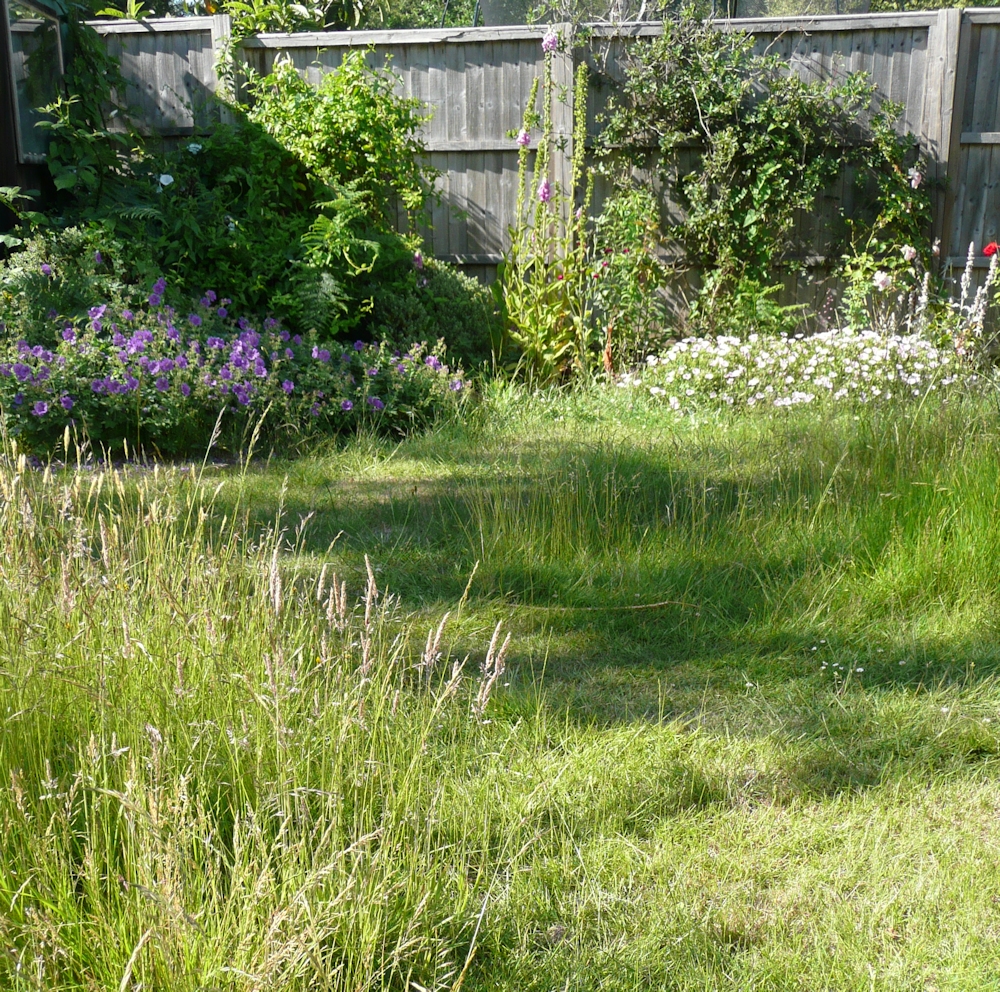Monthly Archives: July 2020
Cast Shadows 4: The Wider Landscape and Cloud Cover
July 12, 2020
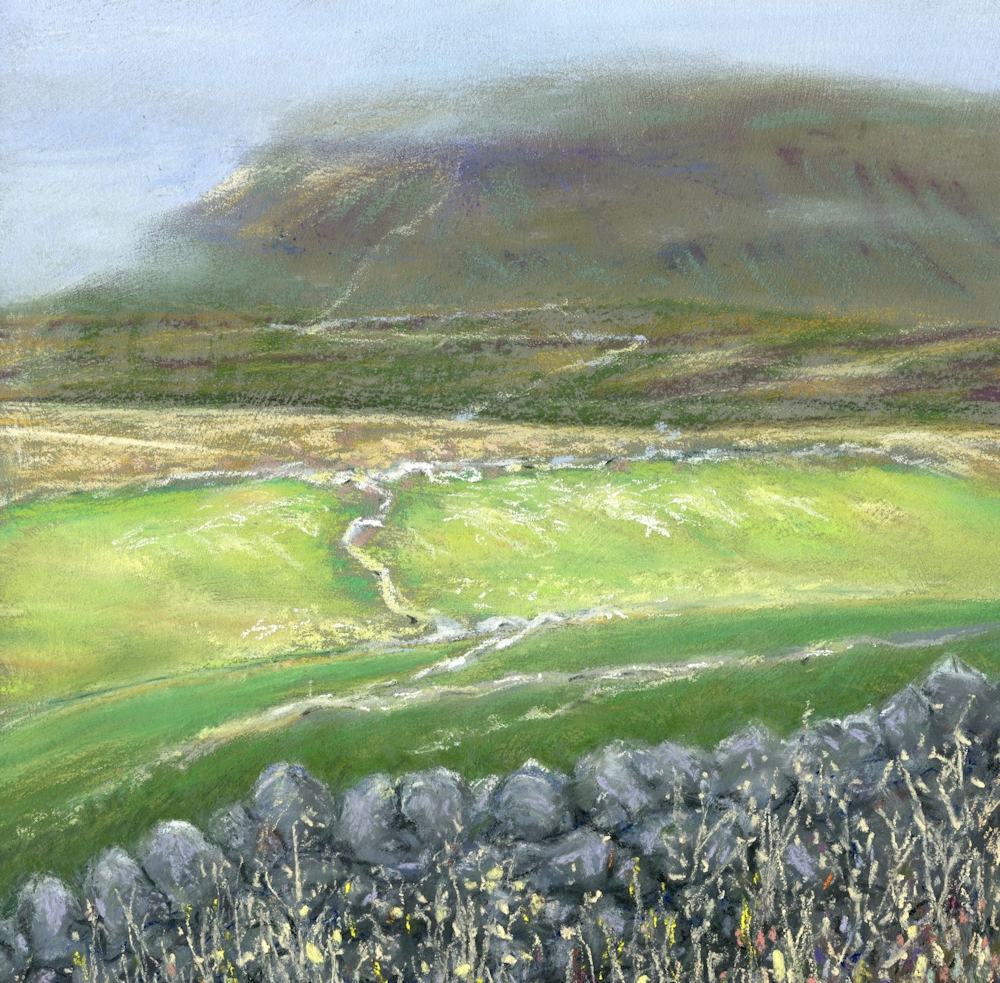
This week we are going to consider the wider landscape, especially the effects of partial cloud cover and the shadows of passing clouds.
Except for the pastel painting above the illustrations are photographs taken in Yorkshire, where the hills are such that cloud shapes can often be seen as shadows on the hills or gaps in the cloud cover bringing patches of extreme brightness to the landscape. There are also more subtle cloud shaded areas where the clouds are not visible as whole shapes with clearly defined edges, but their shadows make their presence visible as dark grounds in the distant, middle or foregrounds.

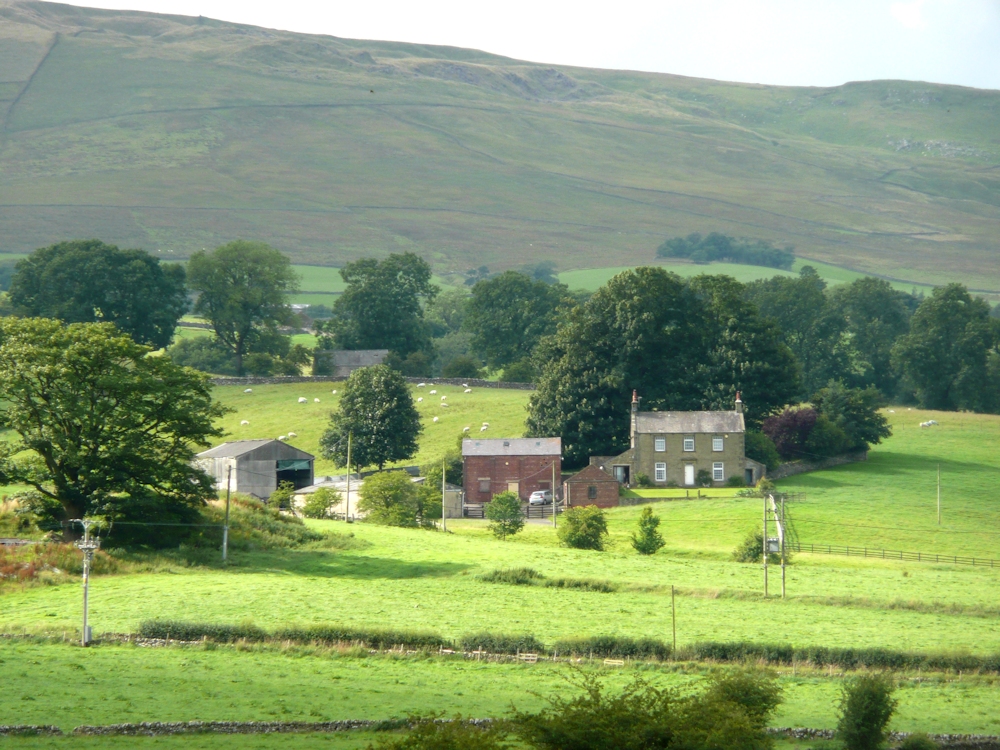
Images of works by the landscape artists referenced can be found added to my Cast Shadows Pinterest Board at
https://www.pinterest.co.uk/jhall1282/cast-shadows/
When there is wind and patchy cloud cover this makes things hard for the en plein air painter as the tones can vary in seconds and changes in tone can even mislead the eye into failing to read the topology of the landscape correctly. This should never deter you from working outside and gaining that firsthand experience of the landscape. It does mean that whether sketching as a preparation for painting, or painting outside, you have to watch the landscape and decide swiftly on where the shadow areas are and stay with this decision throughout your study. Cloud shadows can change far more rapidly than shadows caused by the elevation of the sun at different times of day.
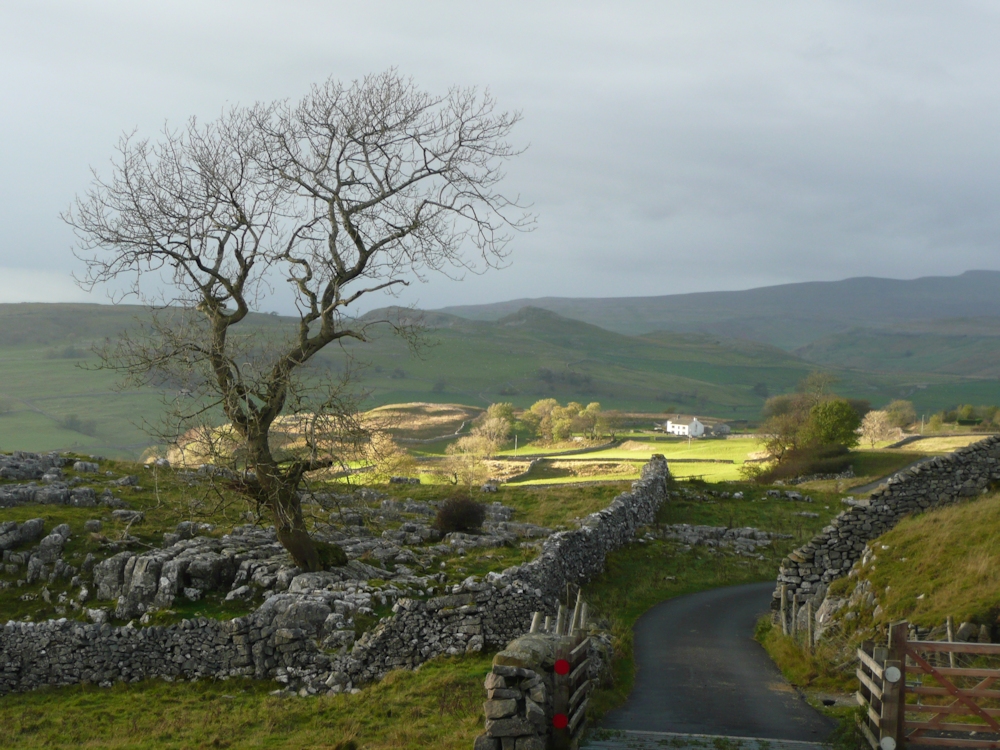
Starting with Caspar David Friedrich’s painting of 1810, Landscape in the Reisenberg we see a small low lying part of the landscape with a hamlet and church bathed in an island of light and dwarfed by the dark mountains behind in a similar same way that my photograph of Winskill Farm is lit by a gap in the cloud cover in the Yorkshire Dales just a few miles from Settle. Do look at the post referenced, scroll down till you get to the image of Friedrich’s painting and read about our reaction of awe when observing dramatic scenery on a large scale, of particular interest to those of you excited by exploring the psychology of art forms.
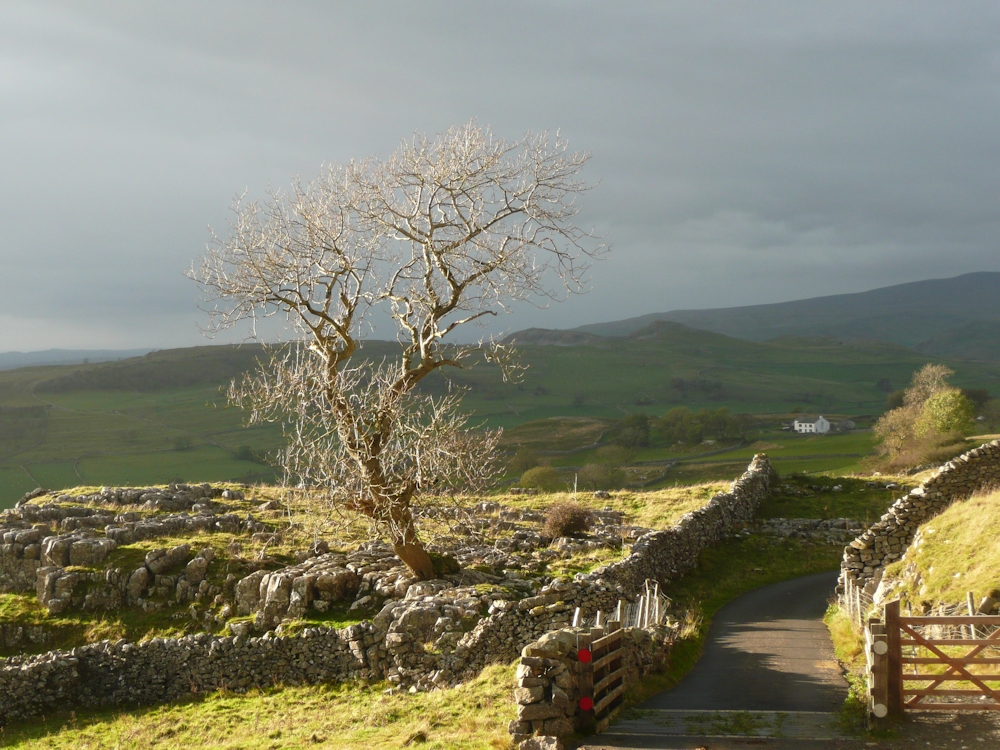
Two contemporary artists I have referenced are James Naughton: Evening Glow in the Lake District where again pools of light are surrounded by the shadows of cloud cover on the land, and Jenny Aitken. Jenny Aitken’s: Showers and Sun, Derbyshire was a prize winning work in the Artists and Illustrators Artists of the year competition 2012 and I did see this work at the accompanying show. Here we see a swathe of middle ground in sunlight with a dark foreground and suggested shapes of the cloud cover in the distance.
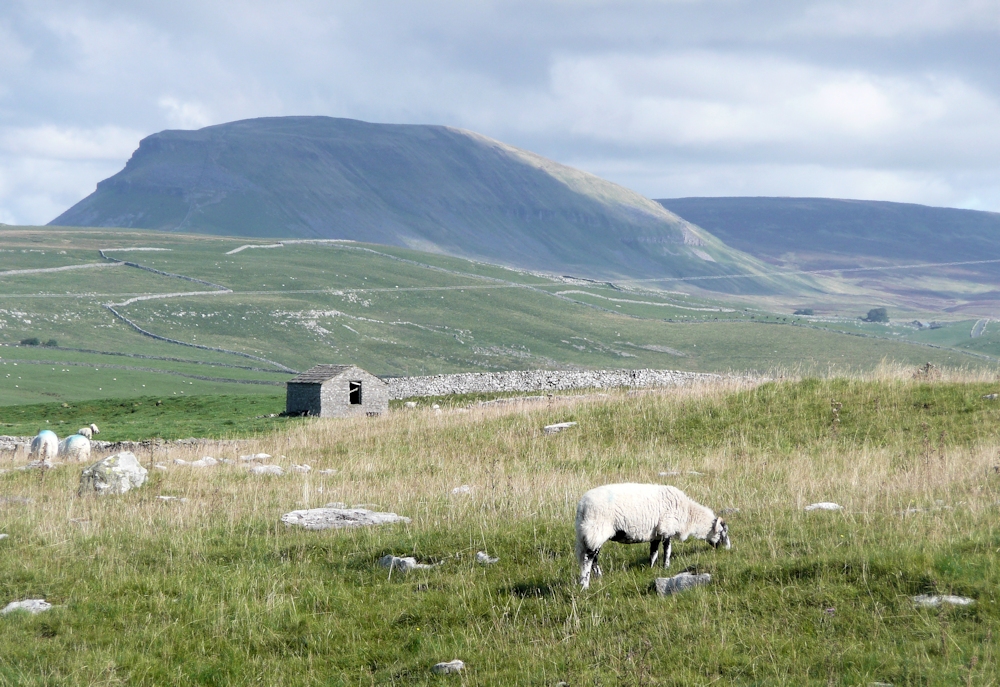
Another artist who often features the shadows of clouds on the land is Oliver Akers Douglas and very often the whole shapes of clouds are evident as darker and more muted versions of the underlying hues.
Going back again in time an American artist Edgar Payne produced compositions from the Grand Canyon and many mountainous regions, and while the cast shadows in his works were very often from the rock formations he also took great care over depicting the prevailing weather and cloud conditions as in Desert Rain. I have learned a great deal about composition from looking at his works.
Lastly do look at the vintage rail travel posters;
1948 Harry Riley: Barmouth North Wales for BR; shadows of clouds extend from sea and on to the sandy beach
1961 Ronald Lampitt for BR : Hamlet in the Yorkshire Dales; blue grey cloud shadows on the distant hills and dark trees against the light in the lower half of the image
Austin Cooper for LNER (London and North East Railway): another Yorkshire dales scene with cast cloud shadows right across the whole composition
Being aware of how many ways clouds affect what we see in the landscape should be helpful in your decision making, especially with regard to tonal values in what are so often rapidly changing situations.
Your paintings;
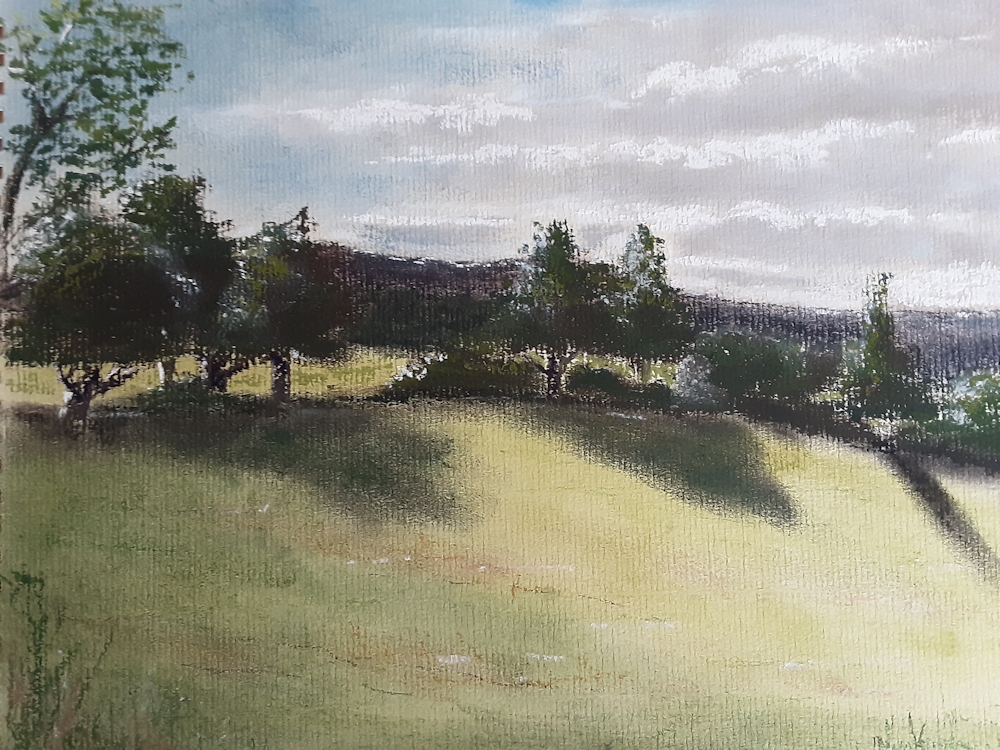
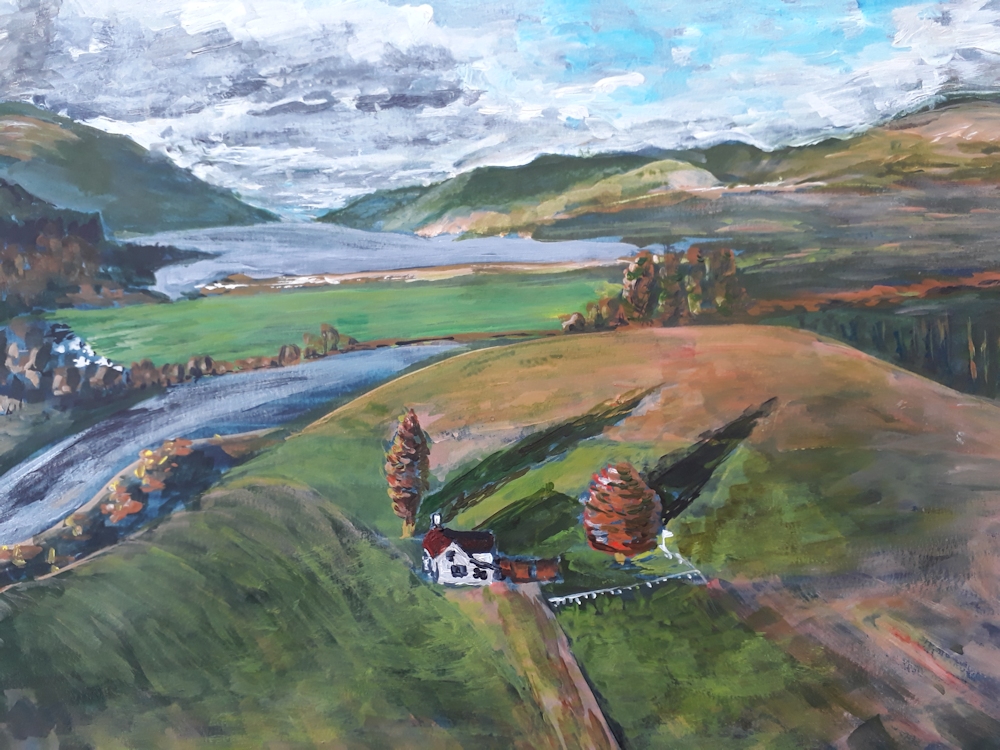
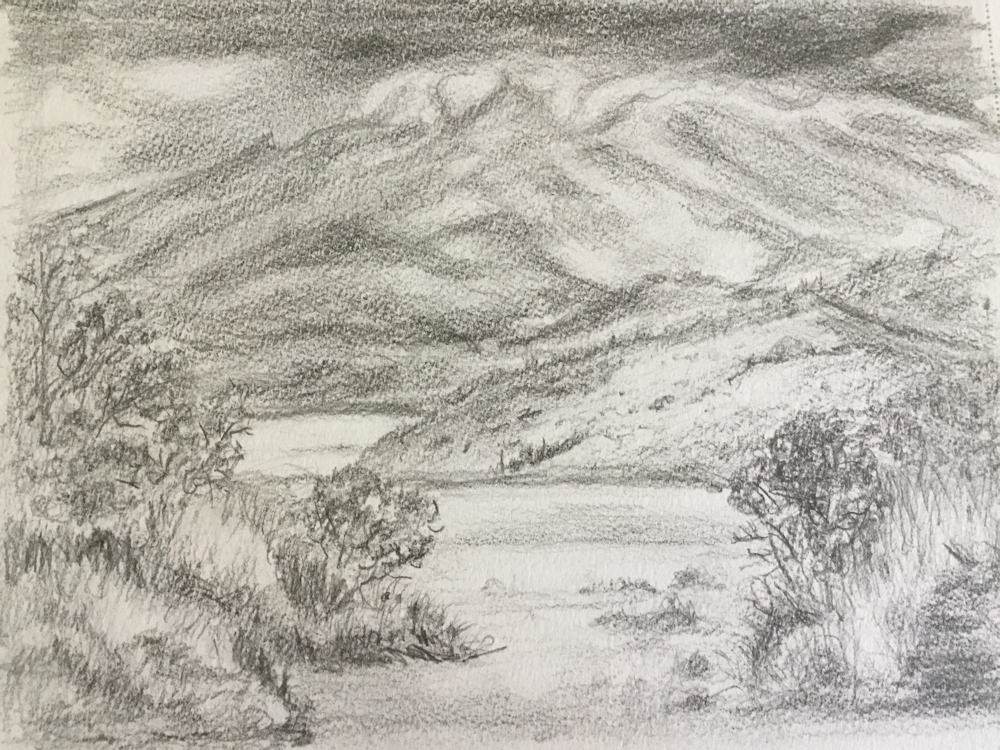
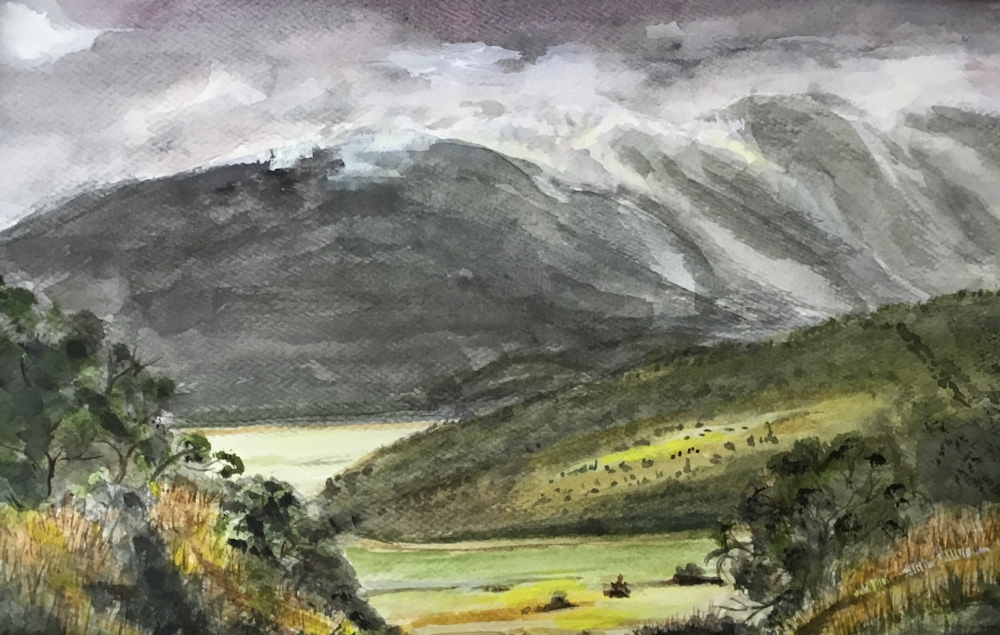
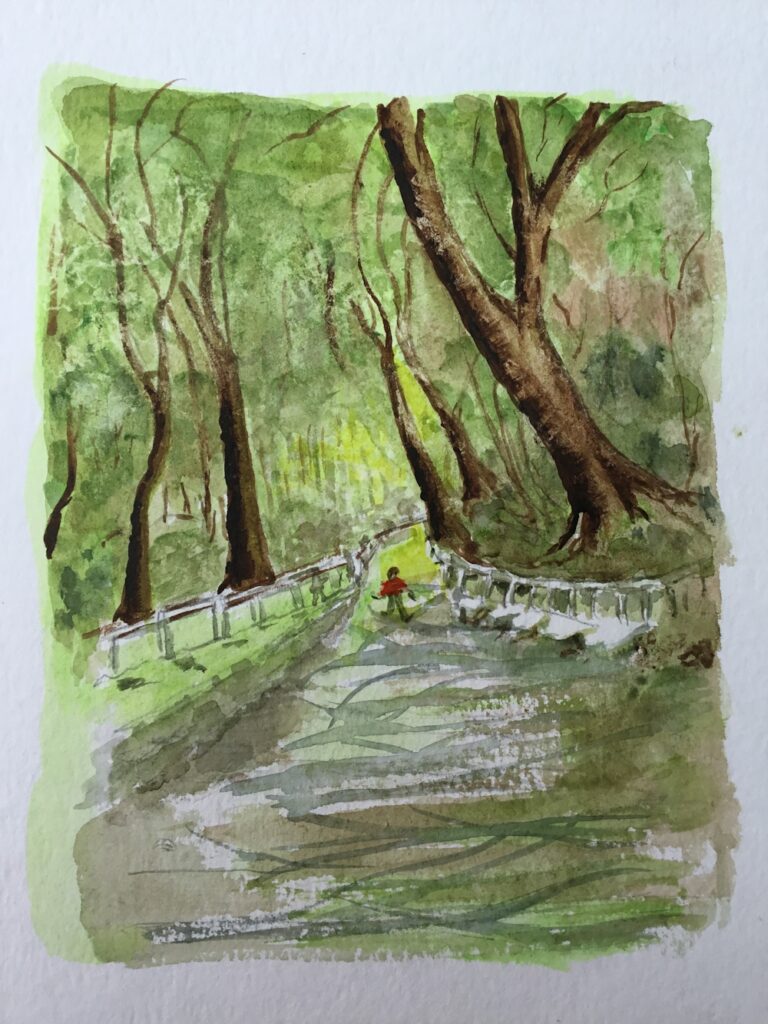
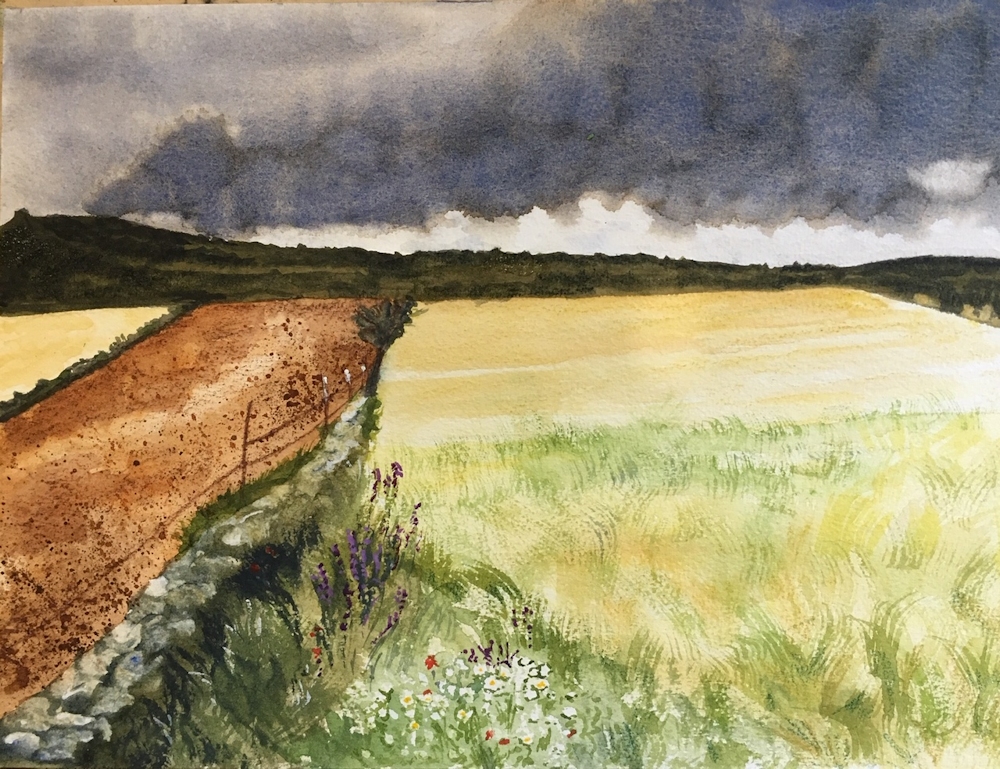
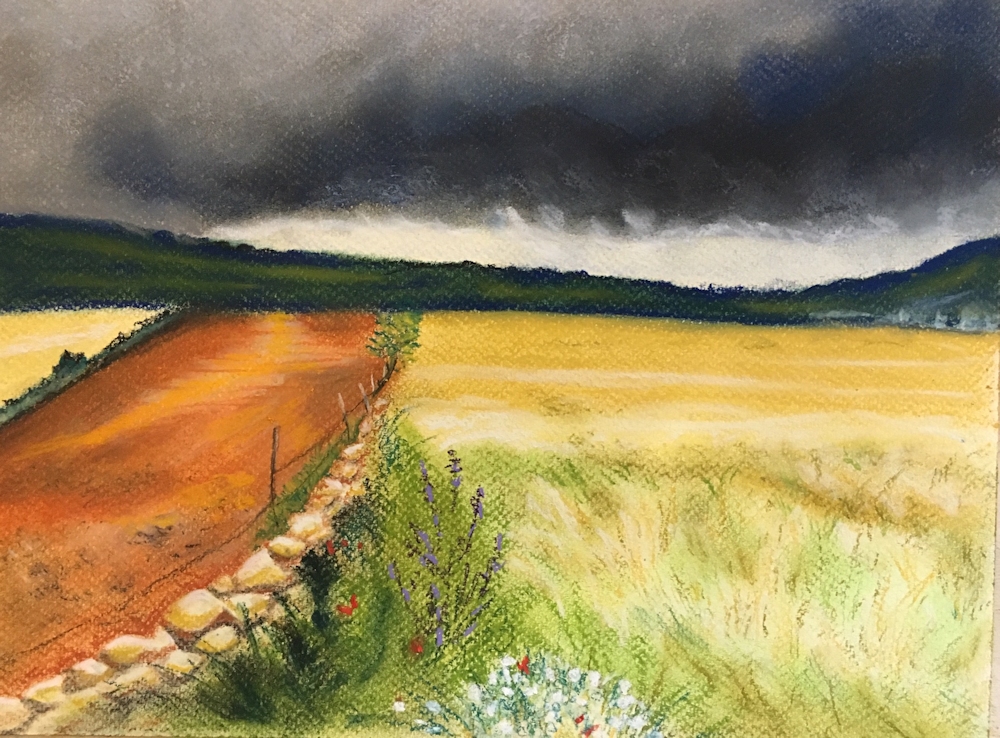
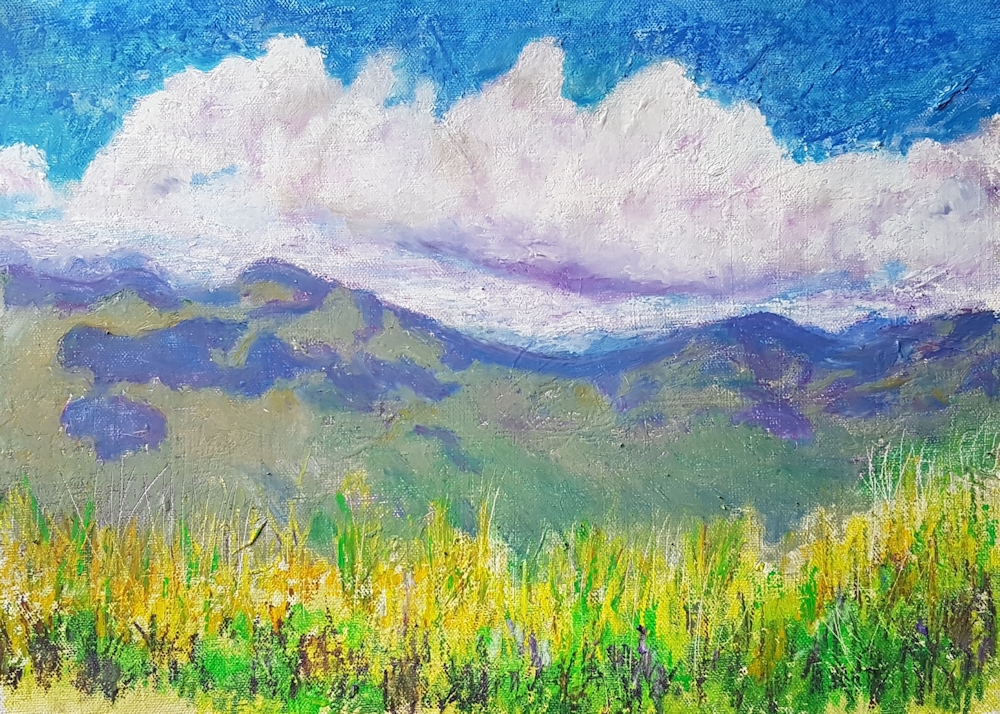
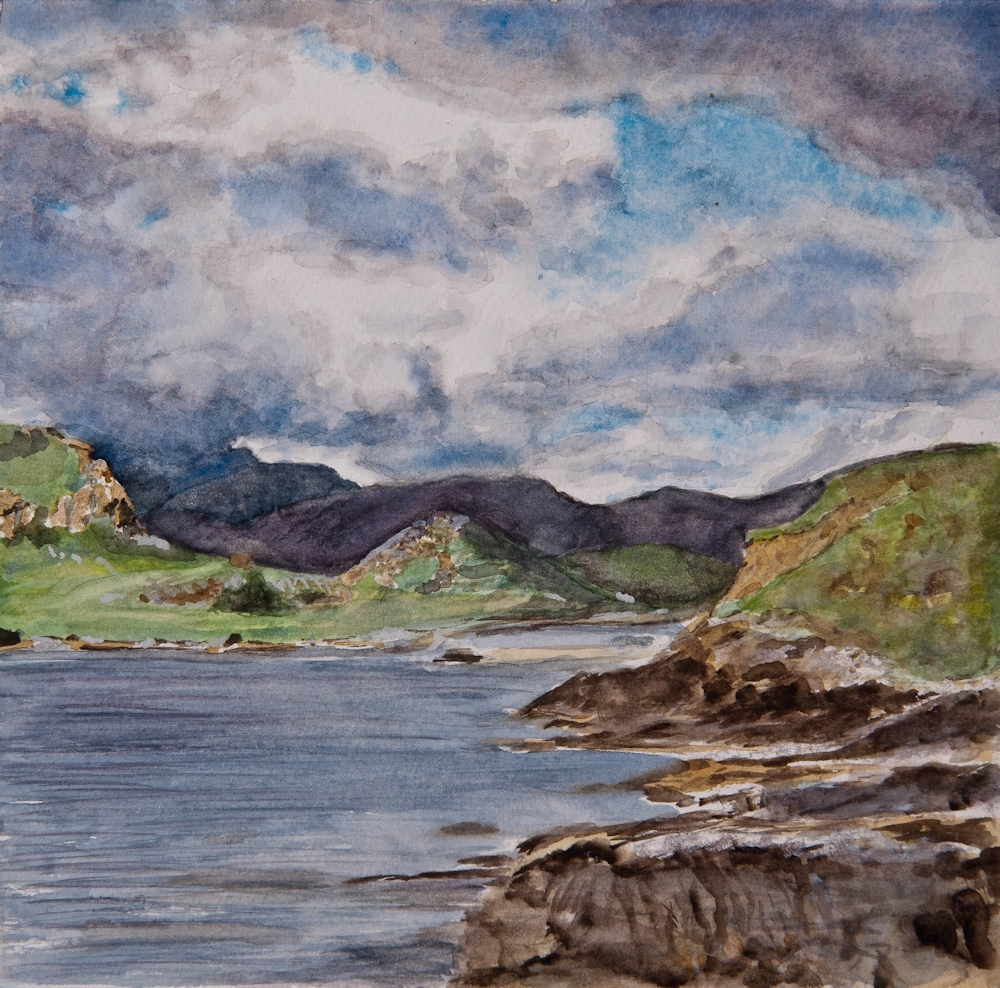
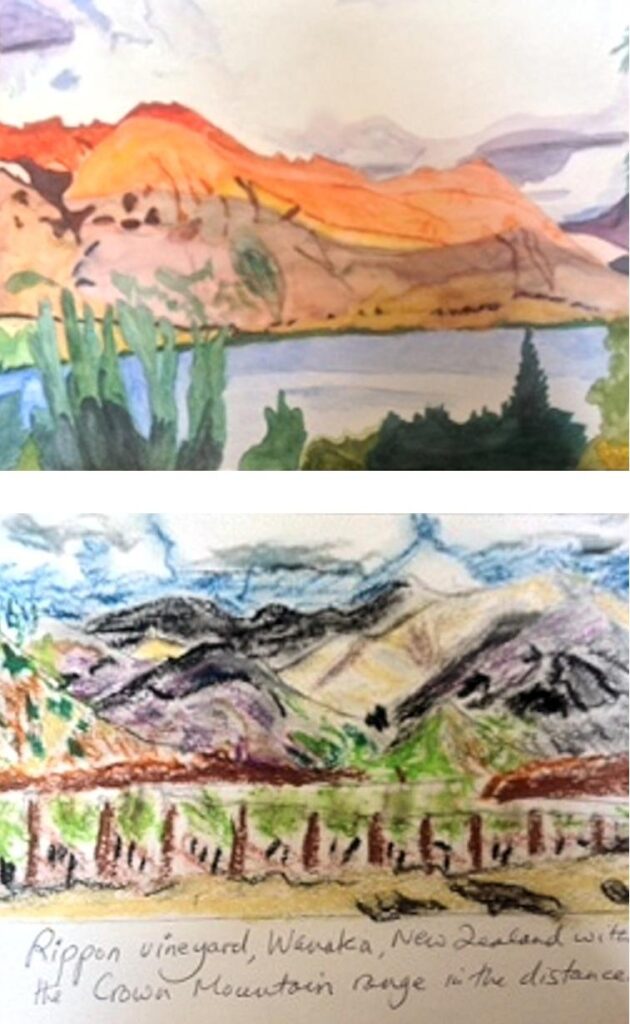
Rippon Vineyards, Otaga District the Crown Range New Zealand
by Elizabeth
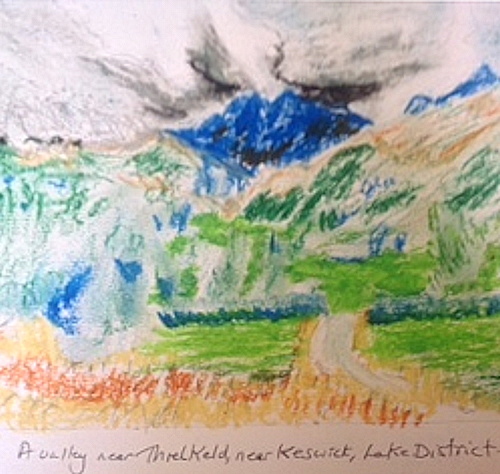
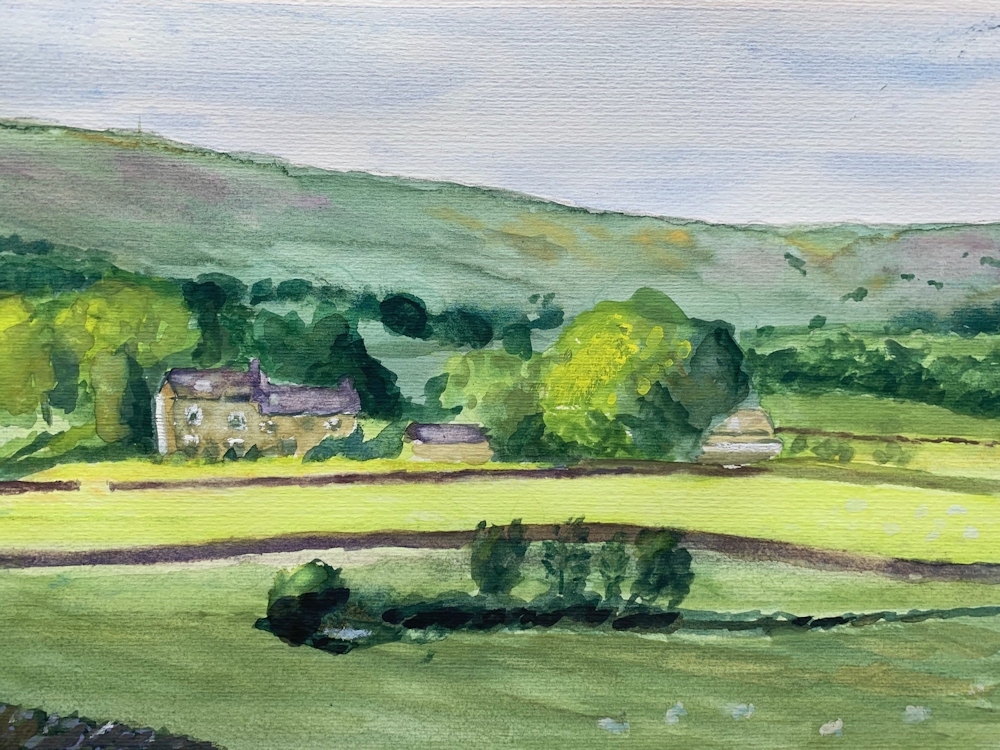
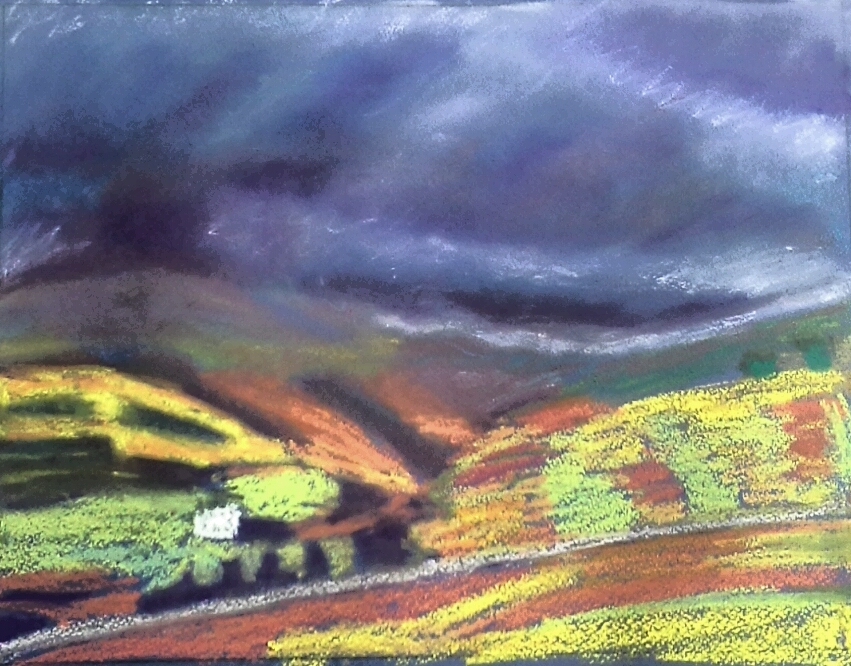
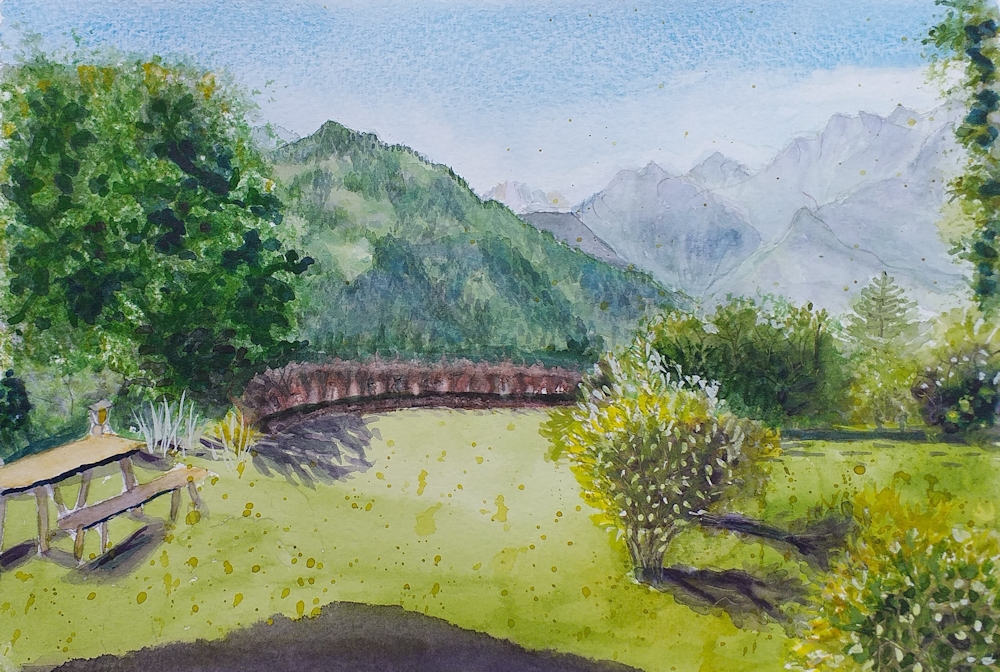
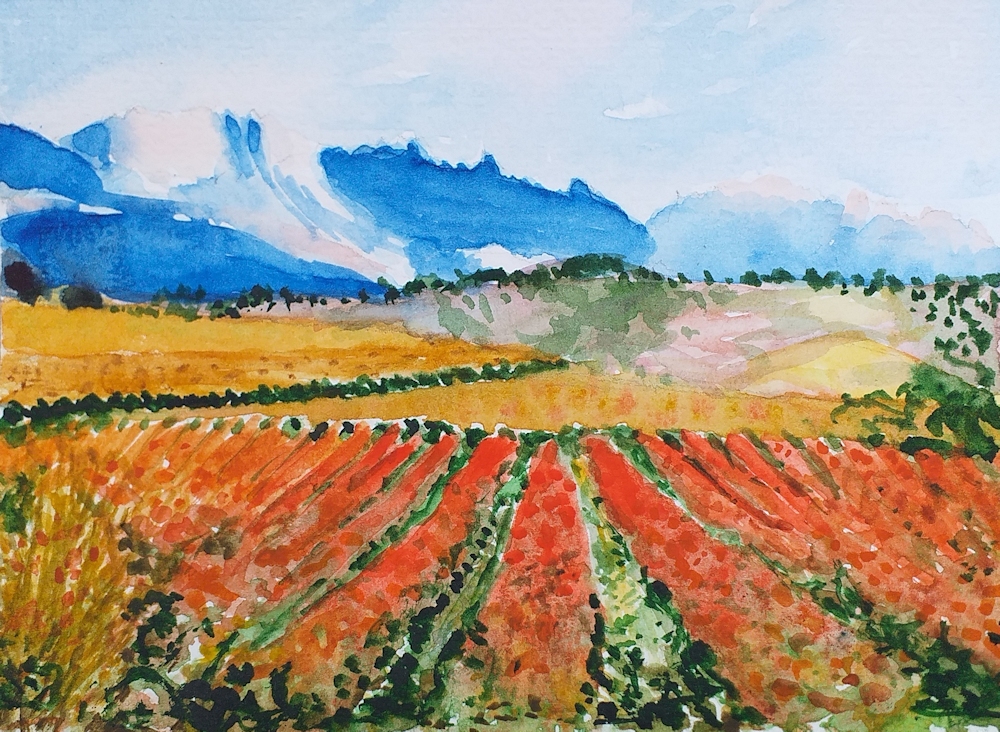
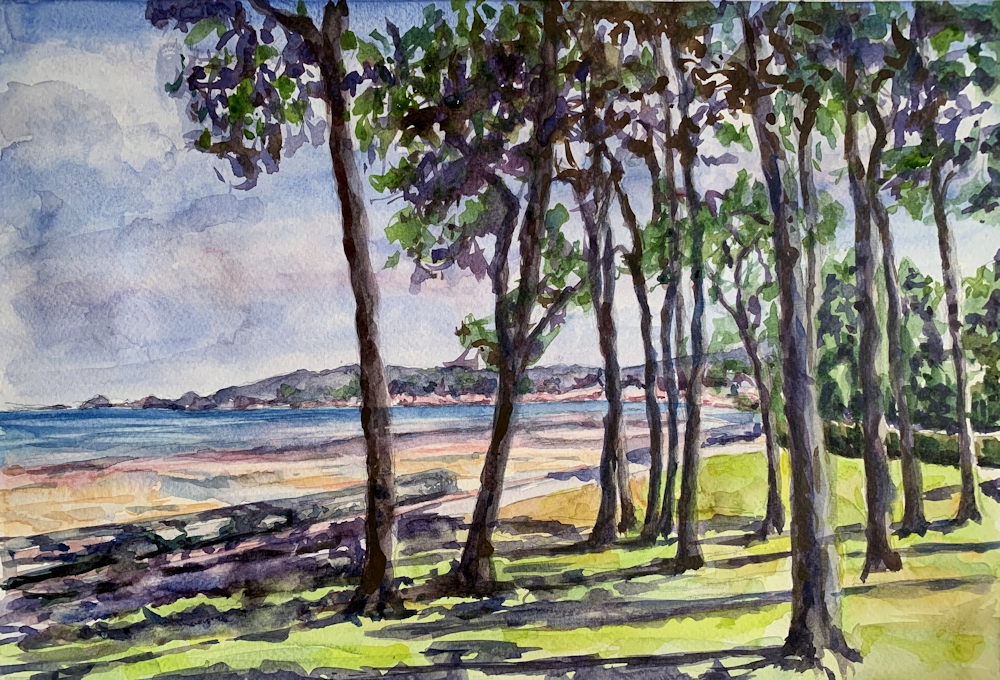
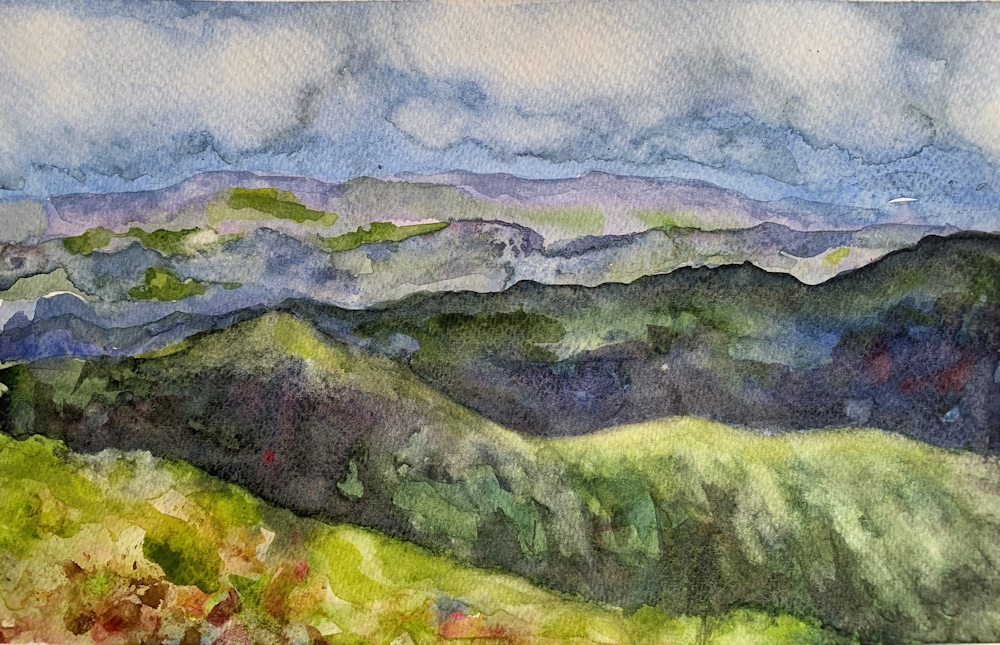
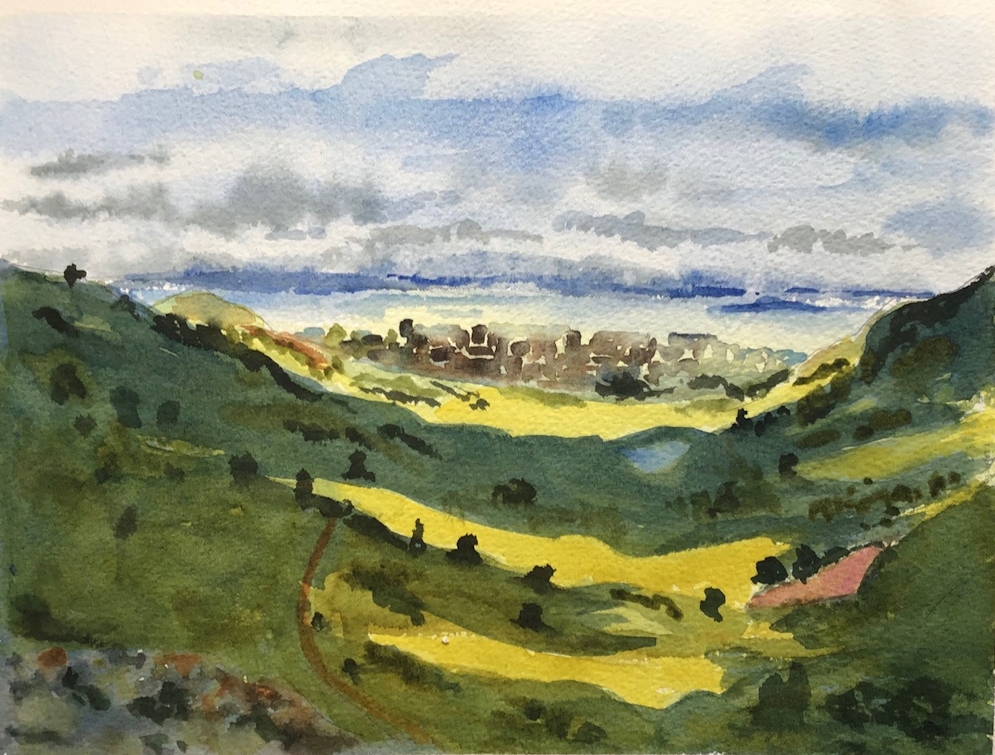
Cast Shadows 3 Moving Outside
July 4, 2020
This week we move outside into the sunlight, a world of colour and tone still governed by the principles of physics. The sun is far enough away that light falling on objects is pretty much from one direction but the angle of the sun in relation to the object determines its length so we have short shadows midday and long shadows morning and evening. Even by moonlight the distortions that occur due to a one point light source near the object do not occur. However as you will see from the works of Matthew Lewis this is very different where night time lighting is from a street lamp or multiple sources.
It would be good to look at subjects where shadows are cast against the ground or a wall and this gives scope for garden, countryside or urban settings. All the artists referenced have been added to my Cast Shadows Pinterest Board https://www.pinterest.co.uk/jhall1282/cast-shadows/
What we will look at in some detail is the difference between soft and hard shadows and ways to depict them. The first reference artist I have chosen is Renoir, in particular two paintings. The first is “ Women in a Garden” about 1876, where a garden path with bright flowers on the left leads to two figures, one with a white parasol. The foreground is taken up with the dappled shadows of a tree we cannot see and on one side of the path is the cast shadow from a paling fence on the right. Note the deeper tones of the shadows nearer to the viewer and the paler more blue shadow cast by the fence as it follows the path in the middle distance. The foreground shadow has hints of the flower colours in the broken colour technique used and this could easily be emulated in pastel. If you have a similarly shaded path it would make an excellent project for this week’s challenge.
If you are working in pastel experiment with different hues to make broken colour shadows.
The second painting is “The Jardin d’Essai, Algiers” painted in 1881. The intricate pattern of palm foliage is echoed by their cast shadows on the ground. Note the blue and purple colours in the shadows and their soft edges.
One of the most beautiful examples of soft and harder shadows in watercolour is a work called “Corfu: Lights and Shadows” painted in 1909 by John Singer Sargent and a great mix of watercolour applied both wet in wet and wet on dry. If you have a wall on which a tree or shrub casts its shadow try and use similar techniques.
If you are working in watercolour it may be a good exercise to try painting shadows in the following ways, remembering that you may need more than one technique to produce your finished work. I have used some cobalt blue and a mix of scarlet vermilion and light red for my demonstration but you will have to find the combination of colours that works for your subject. Start by mixing a large quantity of the two mixes you are going to experiment with. Then divide some paper into four small squares.
Square 1 wet on dry, shadow colour first
Paint a shadow shape in a cool blue or blue/purple. Leave to dry.
Paint a wash of ochre or a reddish colour over the whole square
Square 2 wet on dry, background colour first
Paint a wash of ochre or a reddish colour over the whole square.
Leave to dry then paint the shadow over the first wash.
Square 3 wet in wet and wet on dry
Moisten the whole square with a sponge and paint the shadow while the paper is still wet.
Leave to dry then add the background wash over the whole square.
Square 4 wet on dry and wet in wet
Paint the whole square with a wash of background colour. Leave to dry.
Moisten the whole square lightly by dabbing not stroking with a sponge and paint the shadow while the paper is still wet.
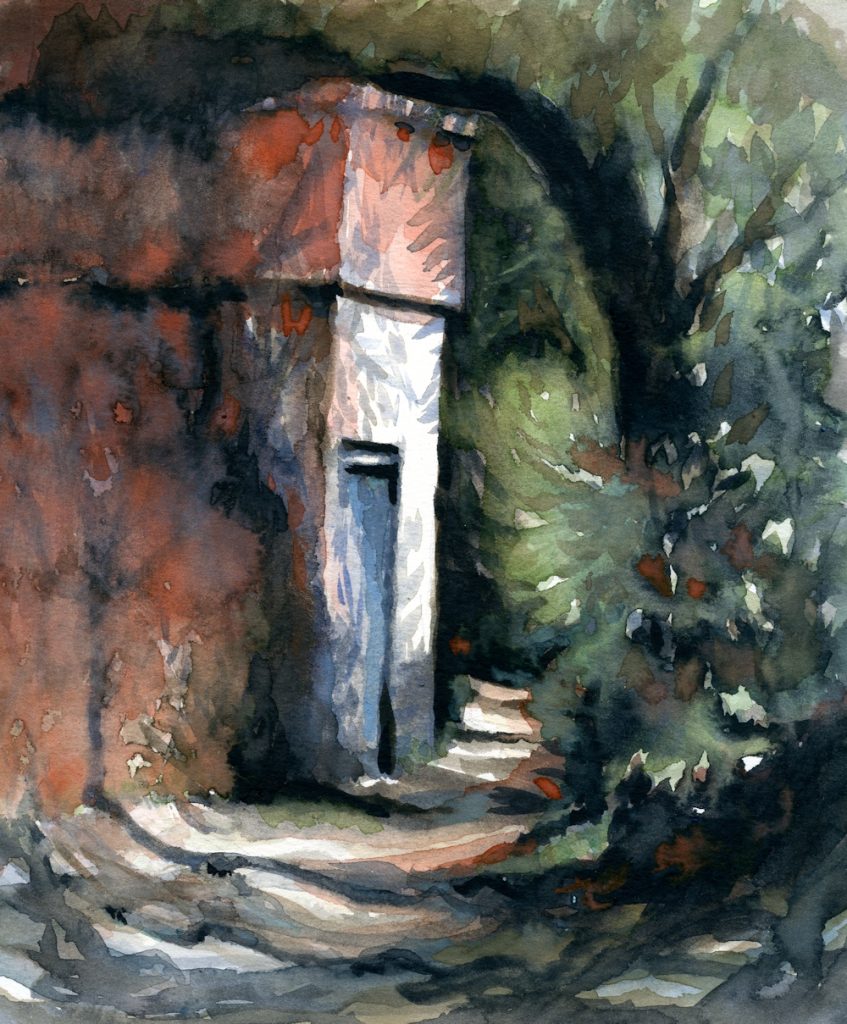
Shady Lane on the Edge of Oumesnat, Morocco: watercolour by Jo: Note wet in wet and wet on dry technique in shadow areas.
Two other artists referenced this week are;
Matthew Lewis who taught Edward Hopper. His night scenes of urban exteriors and interiors have an intense eerie drama and surely influenced Hopper.
and
Andrew Macara: I have added his work just for the sheer exuberance of colour and joy it brings. The shadows are painted in quite a flat way with the emphasis on shape and composition. Do look at how carefully Macara has chosen the colours for the shadows in each painting and how these relate to climate.
Lastly here are a few photographs illustrating the kinds of subject matter suitable for this week.
Your paintings:
